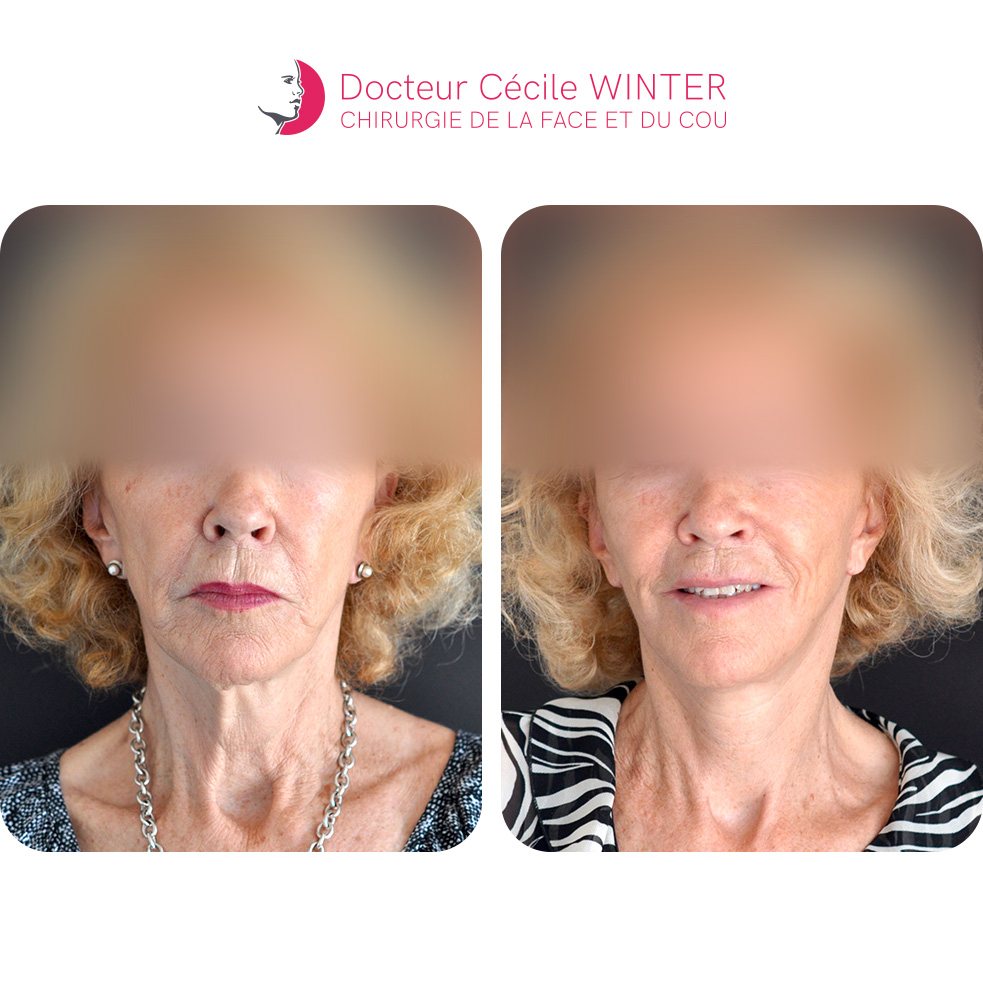Mini-lift, jawline lift, neck lift, central lift, lateral lift, cervicofacial lift, full lift, mannequin pinch, superficial lift, deep lift... with all these terms, it's easy to get lost because they can refer to different parts of the face, each with its own, often marketing-oriented, definition.
What matters in defining a lift is the area involved and the working plan.
Here, we'll focus on the jawline and neck lift.
The working plan can involve skin lifting or, more deeply, repositioning the muscle. From an anatomical perspective, what happens?


As previously discussed, the platysma muscle is a major contributor to jawline and neck sagging.
The contraction of the mouth part of the platysma, extending from the corner of the mouth to the clavicles, pulls the cheek down and forward, forming jowls and the lower part of the marionette line.
Functionally, this exerts a powerful negative vector on the corner of the mouth and the lower eyelid, ultimately hindering mouth and eye closure.
The neck cords are linked to repeated contractions of the front part of the muscle originating under the chin and also extending to the clavicles.
These cords, through repeated contractions, take the shortest path from the chin to the base of the neck, detaching from the depth.
They come closer together, pulling the skin and fat of the neck forward and toward the center.
Therefore, it seems more anatomically and functionally accurate to reposition this muscle high and back into its youthful position through a high and low deep-plane technique.
This helps restore the jawline and neck by repositioning the musculo-fatty structures that have slid over time.
This technique, known as deep-plane or deep lift, is considered the international gold standard for cervicofacial lifting.
The surgery is not aggressive on tissues, as it follows the natural plane of sliding.
There is almost no subcutaneous detachment, preserving the integrity of the muscle-fat-skin unit and maintaining fine expressions.
The surgery, performed under general anesthesia, generally lasts between 2.5 to 3.5 hours, with a one-night hospital stay.
Activities can be resumed at around the 15th day, and follow-ups are scheduled in advance, from one month to a year, to monitor the healing process.
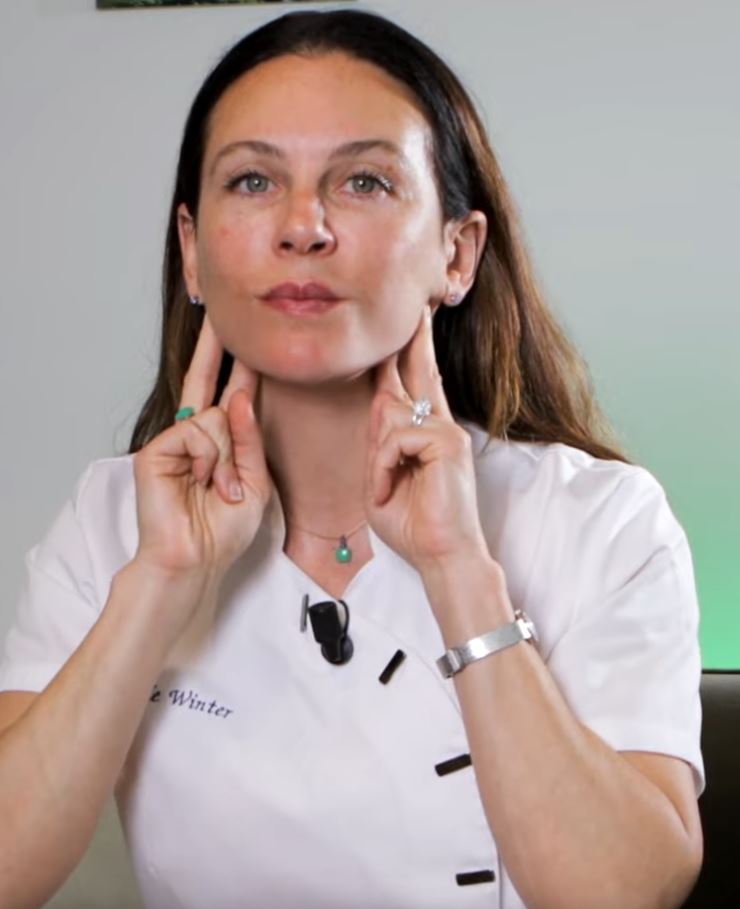
As aging is multifactorial, jawline and neck sagging are often not isolated. It's common to find fatty deposits under the chin and loss of fat volume in the face. Therefore, liposuction of the neck and lipofilling of the face are almost systematically associated with the jawline and neck lift for a more natural and harmonious result.
If sagging eyelids are also present, they can be treated during the same session.
During the first consultation, a comprehensive analysis of the face is conducted together in front of the mirror.
An anatomical analysis of the neck structures is also performed to objectify expected results and, most importantly, rule out unrealistic expectations.
Various medical and/or surgical techniques to correct the jawline and neck will be discussed, each with its benefits and drawbacks.
If a lift is considered, the technique, hospitalization, early postoperative phase, maintenance, and, most importantly, risks will be thoroughly reviewed.

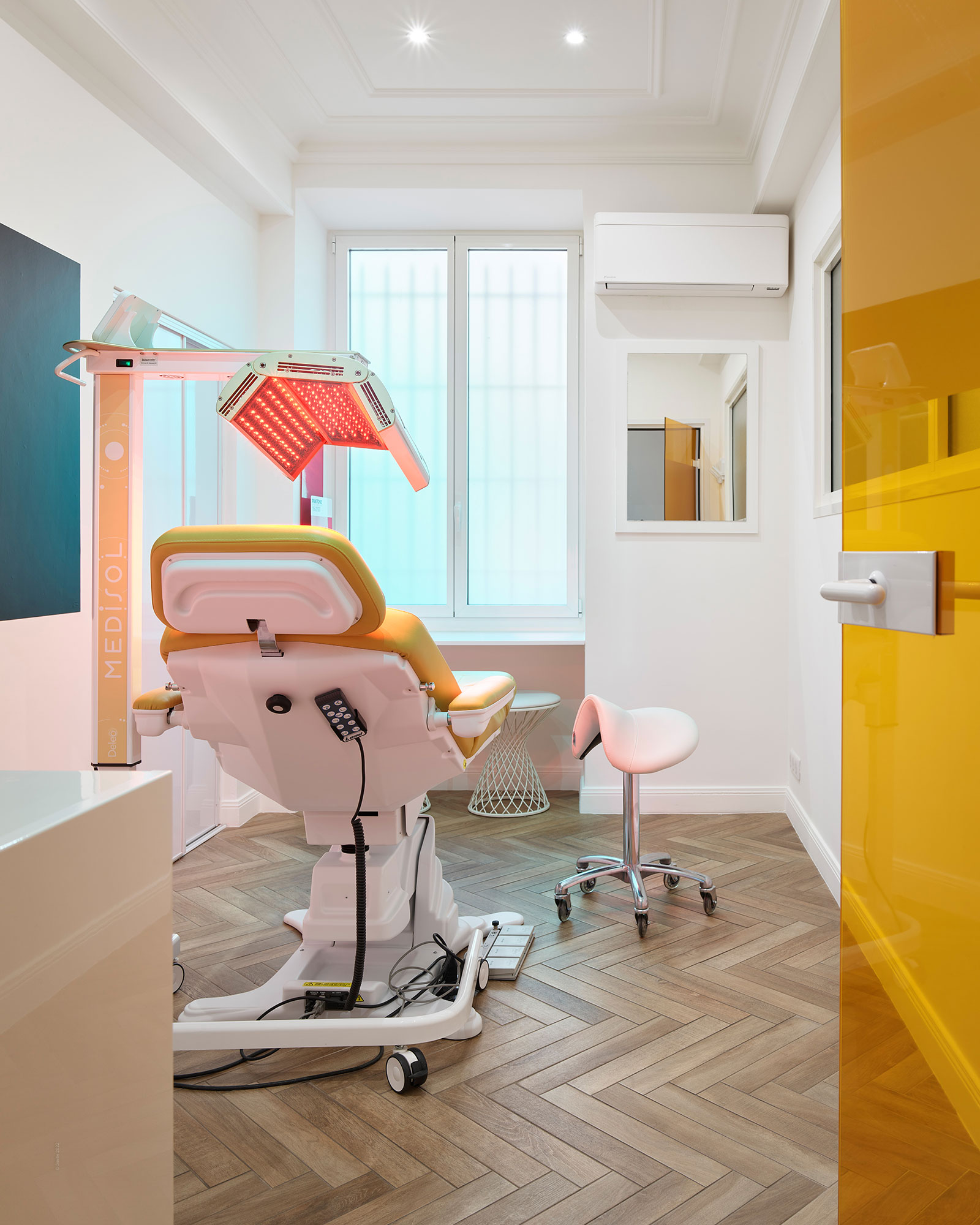
Like any surgery, there is a risk of edema, hematoma, infection, sensitivity disorders, and scarring issues. Specific risks of neck lift and liposuction include temporary induration and discomfort lowering the lower lip. Specific risks of lipofilling include the non-take of fat grafts and exceptionally, necrosis.
All these verbal explanations will be supplemented by the French Society of Plastic Surgery's sheets on lifting, lipofilling, and liposuction. Detailed cost estimates covering surgery, anesthesia, clinic, and postoperative consultations will be provided by my assistants.
Before surgery, usually during the penultimate preoperative consultation, facial and neck Botox will be administered to relax the lowering muscles, aiming for a more beautiful and enduring result.
During the last consultation before surgery, LED therapy will be performed to prepare tissues and minimize postoperative swelling.
The surgery takes place at the Saint-George Clinic, in Hall 2, in an aesthetic care-dedicated service located at the walkway, in the same building as the underground parking.
The duration of general anesthesia is between 2.5 and 3.5 hours, and the jawline and neck lift usually involve a one-night hospital stay.
Driving is not allowed for 24 hours after general anesthesia.
The first 4 to 5 days can be painful, marked by facial and ear edema, making self-recognition difficult.
For the first 3 to 4 weeks, patients are seen twice a week, aiming to accelerate healing through LED therapy and provide moral support.
Resumption of social and professional activity is possible on the 15th day. Mid-term follow-ups are planned at one, two, three, and six months, and one year to monitor healing.
Long-term follow-up is recommended, as surgery does not stop time!
It is strongly recommended to maintain the results of the surgery with biannual injections of botulinum toxin and annual hyaluronic acid, as well as skincare at home at a minimum and, if possible, at the clinic.


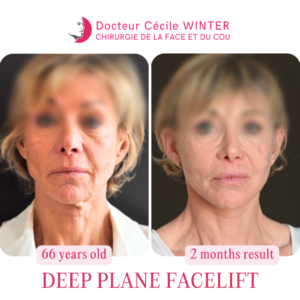
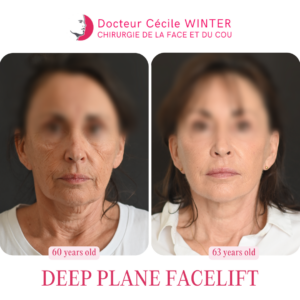
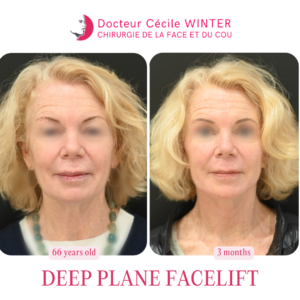


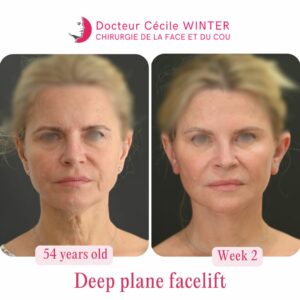
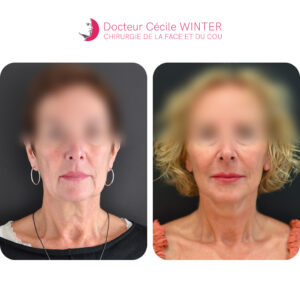
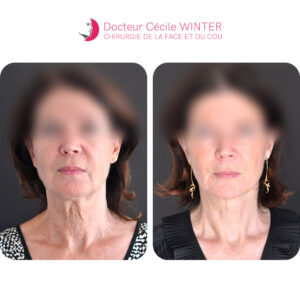
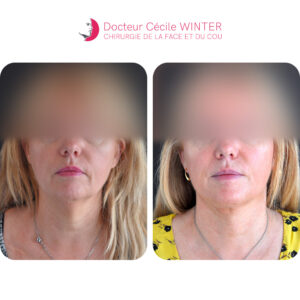
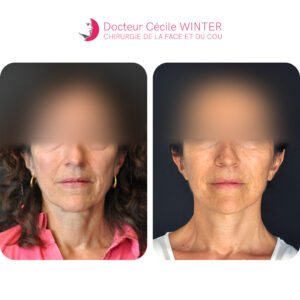
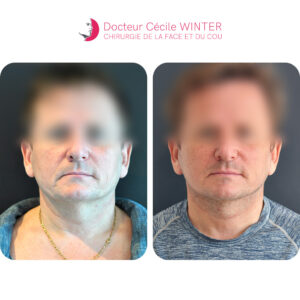

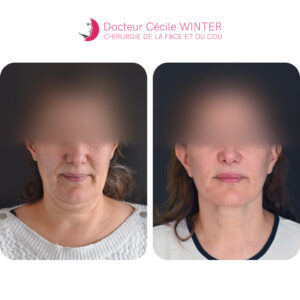
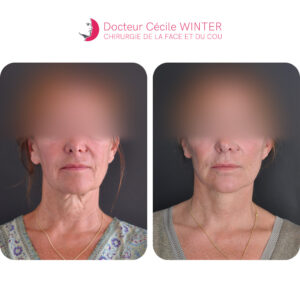


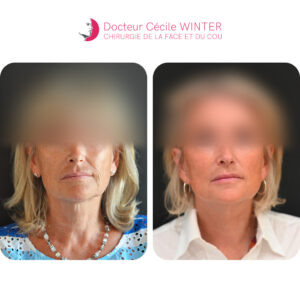

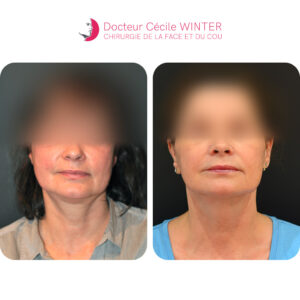

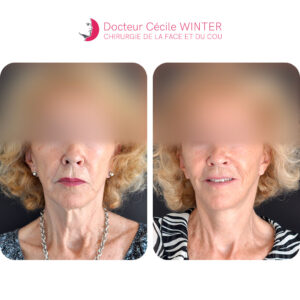















Deep-Plane Facelift and Fat Grafting
A 64-year-old patient with descent of the cervicofacial SMAS-platysma system and cervical skin laxity. Visual fatigue is also noted due to fat atrophy and lack of support under the lower eyelid. A deep-plane facelift was performed, combined with facial fat grafting. The patient enjoys a beautifully rejuvenated appearance with an uncomplicated recovery.



Deep-Plane High and Low SMAS Facelift with Eyelid Surgery
A 66-year-old patient presented with vertical and medial descent of the cervicofacial SMAS-platysma system and cervical skin laxity, worsened by a history of multiple previous cervical surgeries. The patient also showed visual fatigue due to excess skin on the upper eyelid and fat atrophy with a lack of support under the lower eyelid.
The treatment performed included:
- A deep-plane facelift with high and low SMAS techniques.
- Upper eyelid blepharoplasty to correct the excess skin on the upper eyelid.
- Facial fat grafting to restore volume and support tissues under the lower eyelid.



Improvement of Neck and Facial Contour
A 54-year-old patient was troubled by sagging of the neck oval and lack of support in the face, particularly under the lower eyelid and the corners of the mouth. A "Deep plane high and low SMAS" facelift was performed, combined with submental liposuction and facial fat grafting. All incisions are discreetly camouflaged around the ear and hairline, with no submental incision required. The postoperative course was straightforward. At two weeks post-op, the patient has resumed social activities with her hair down. Both the patient and the surgeon are pleased.
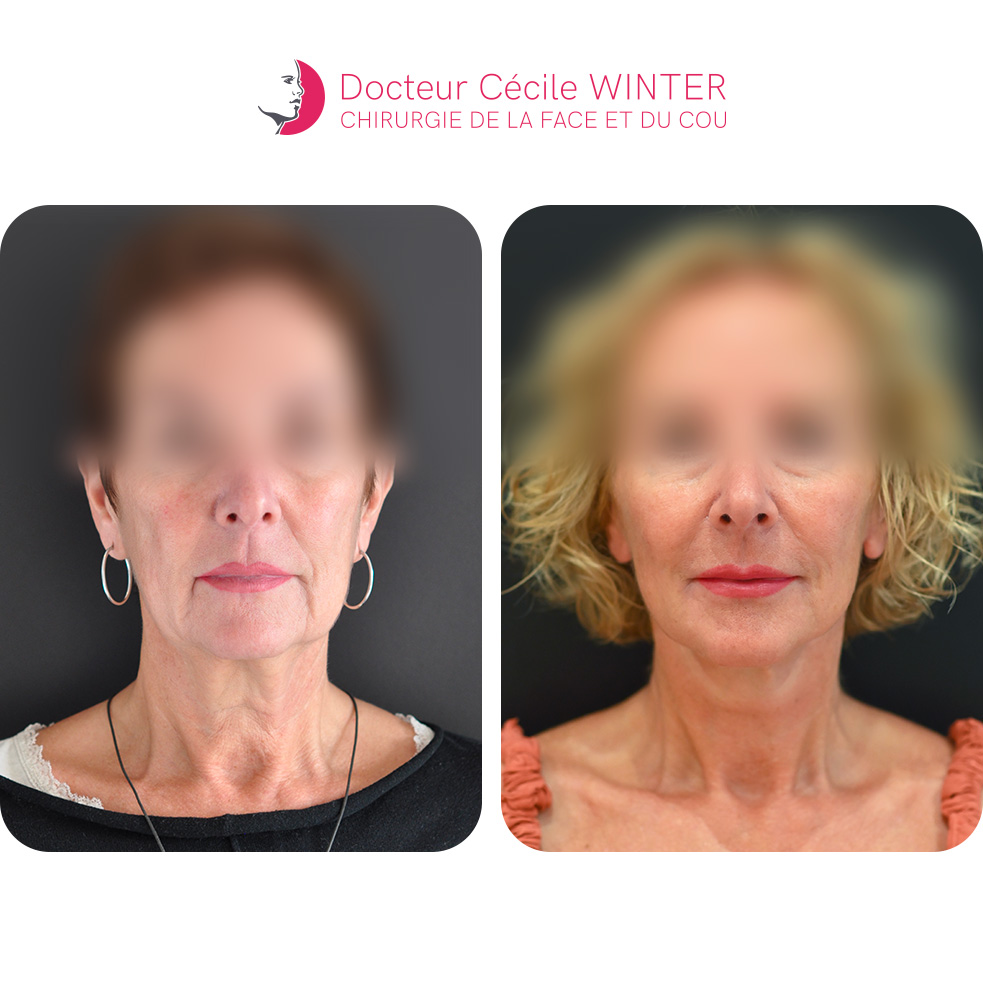
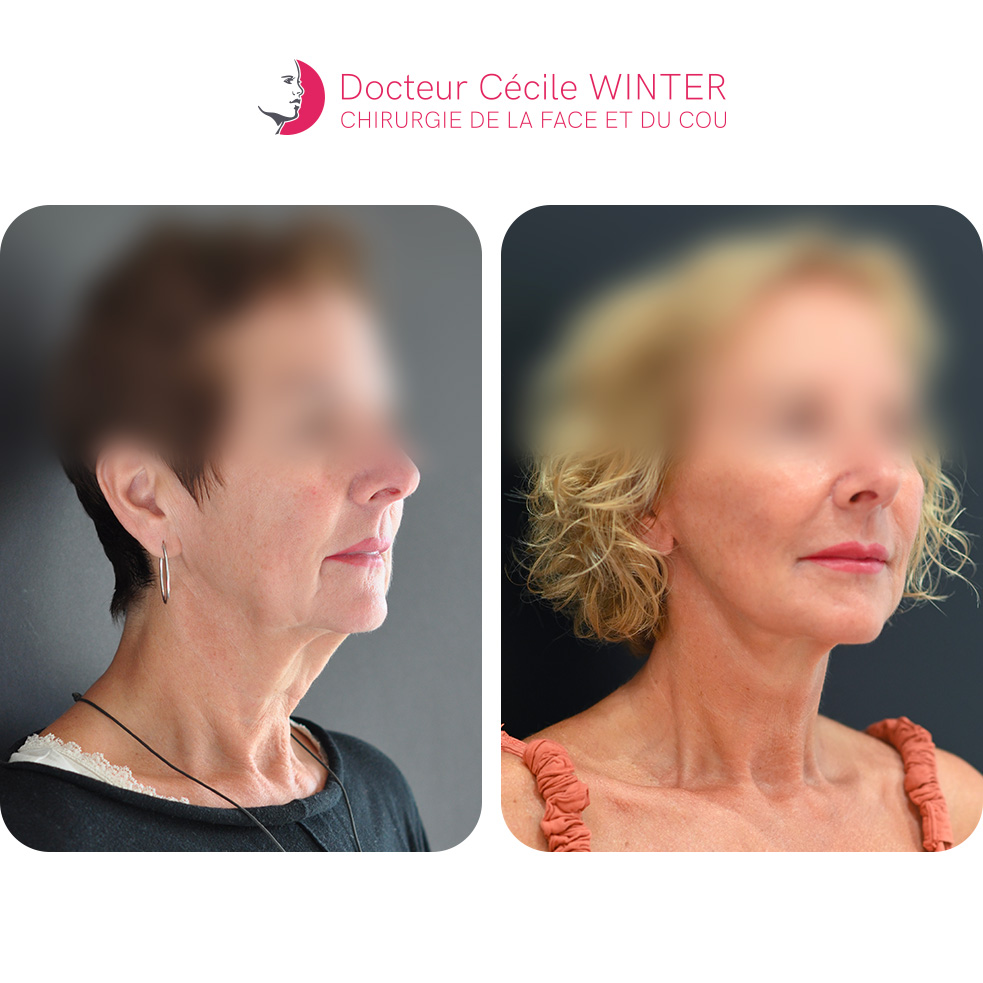
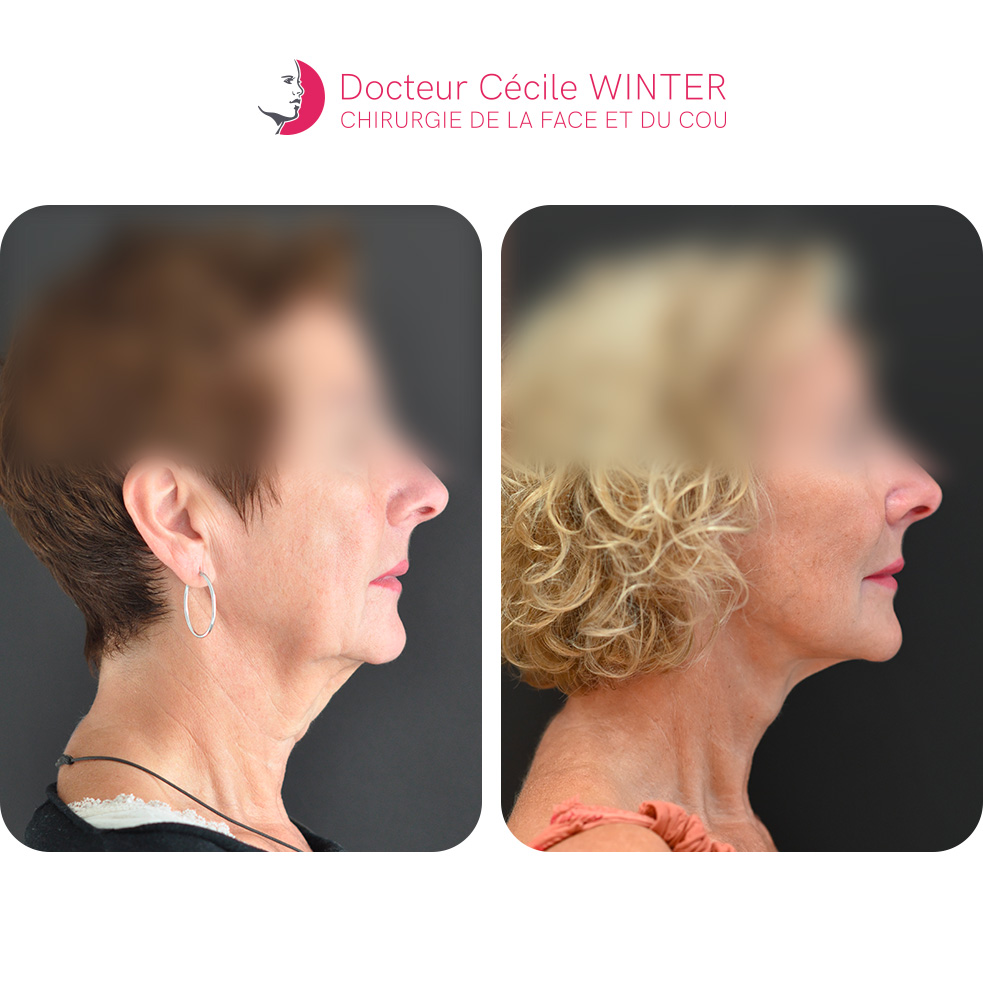
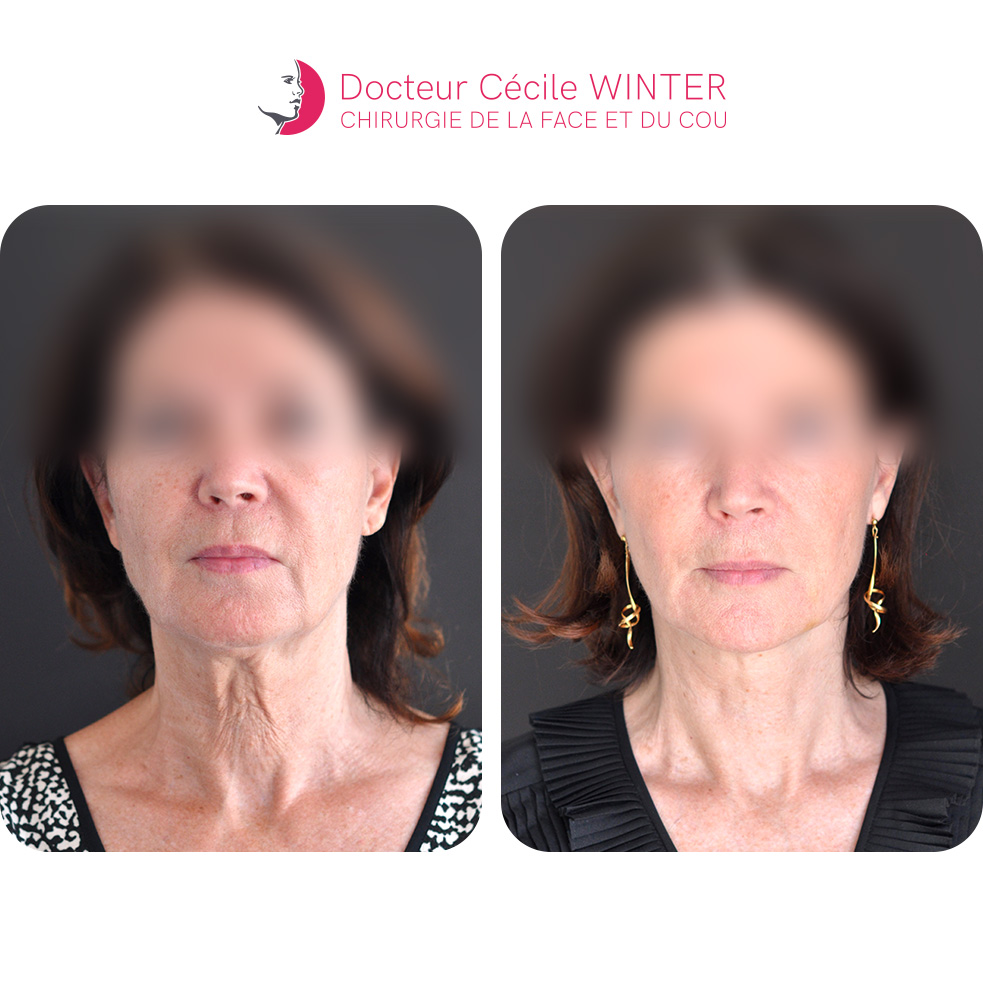
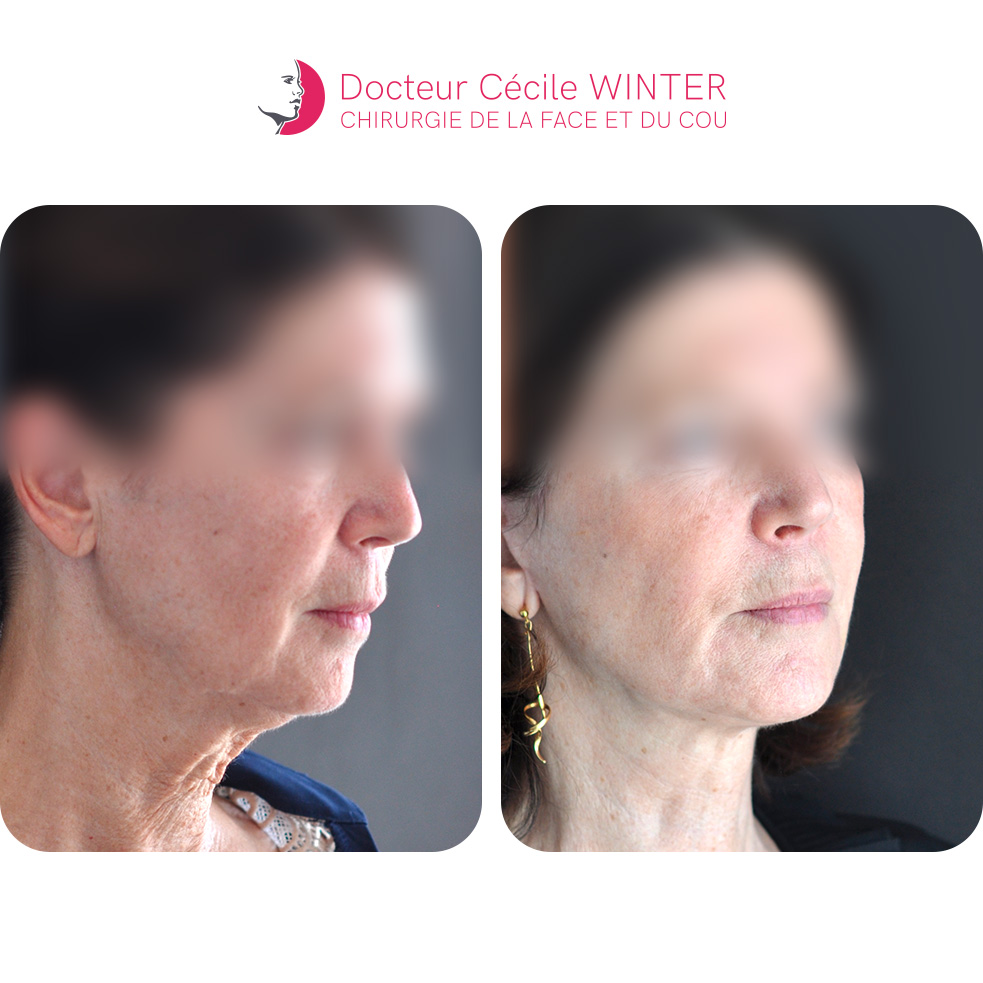
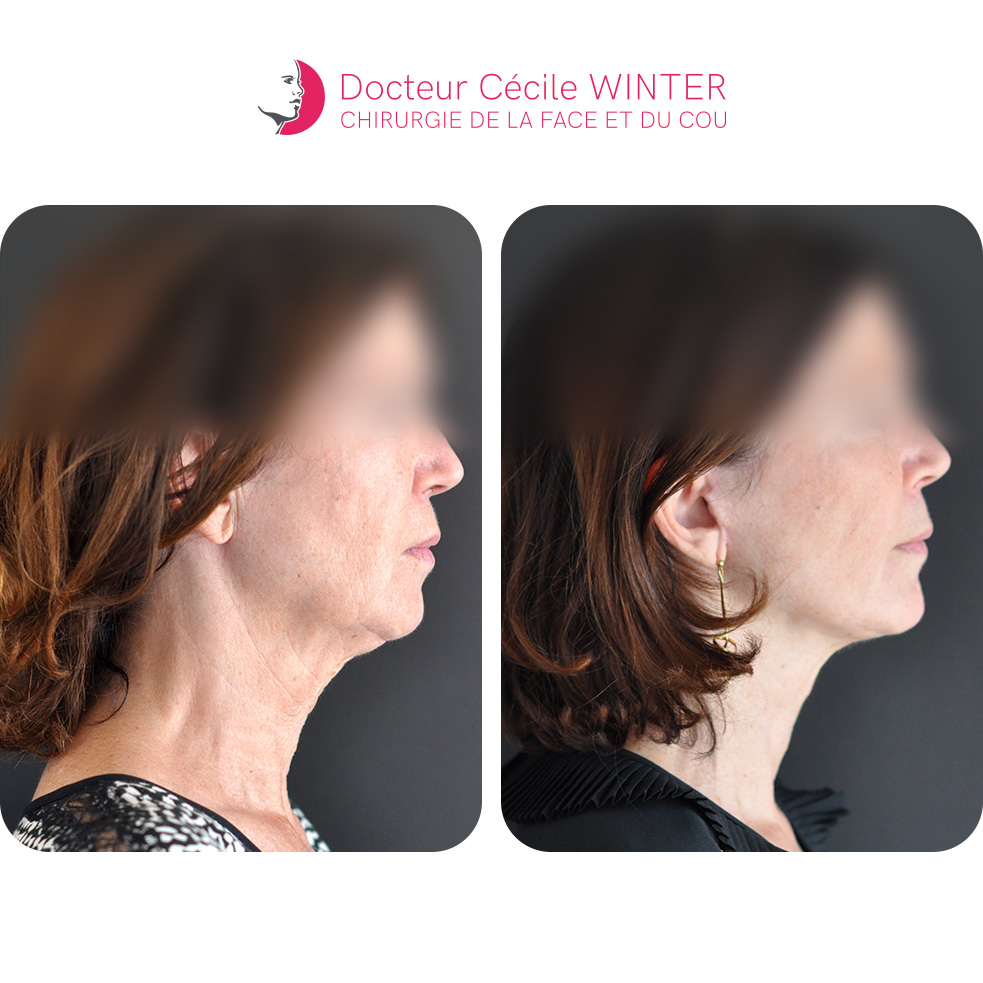
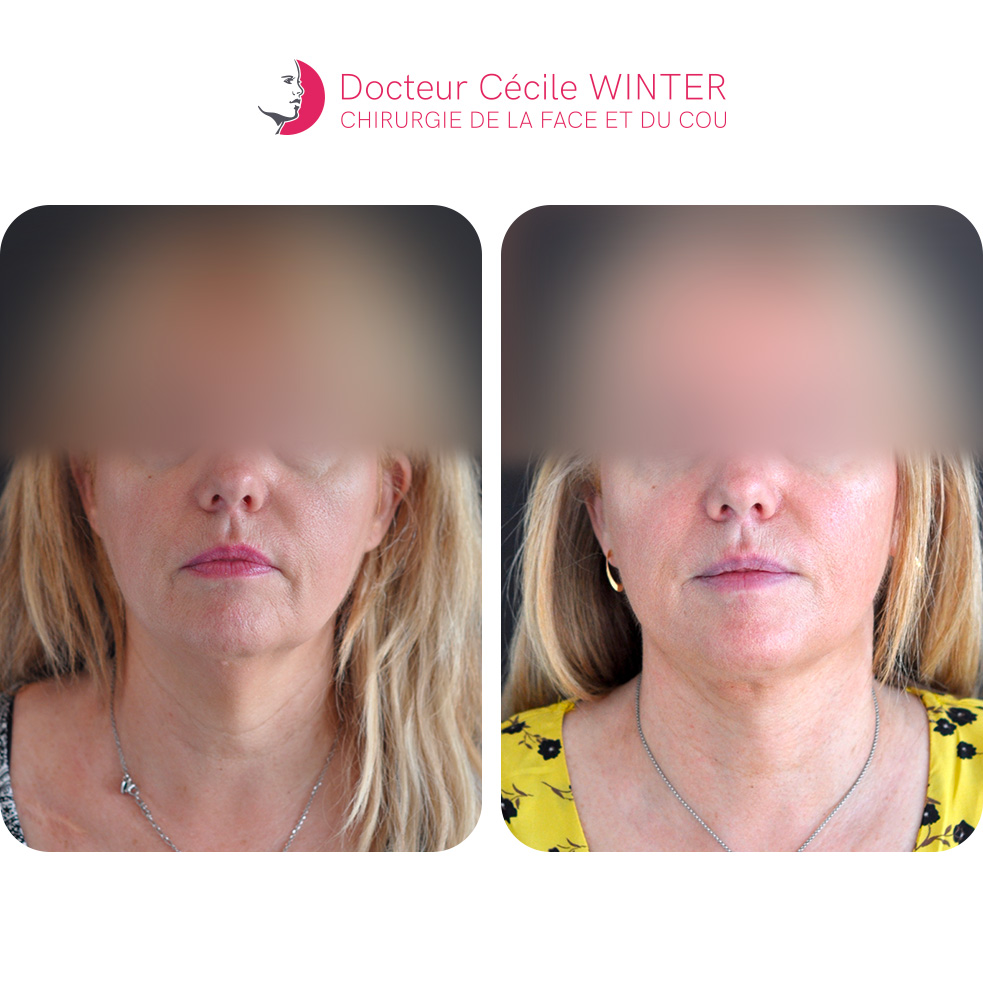
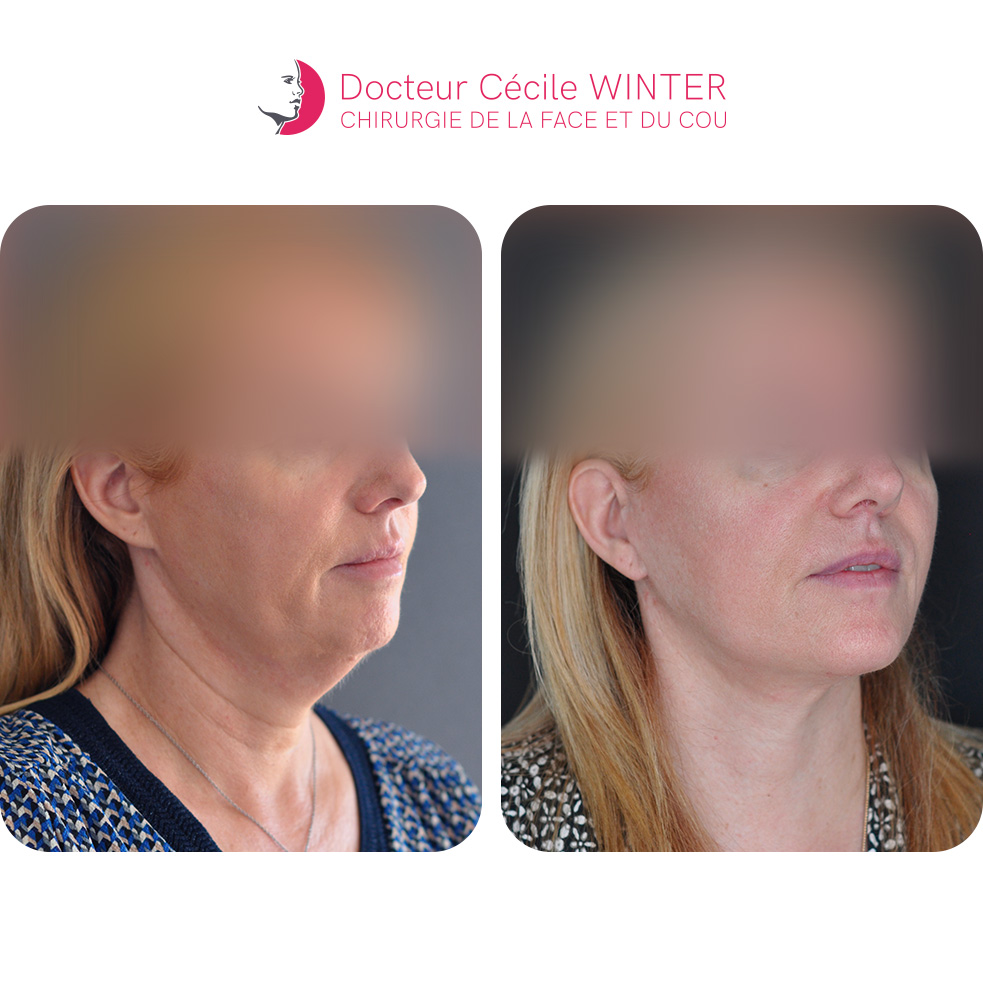
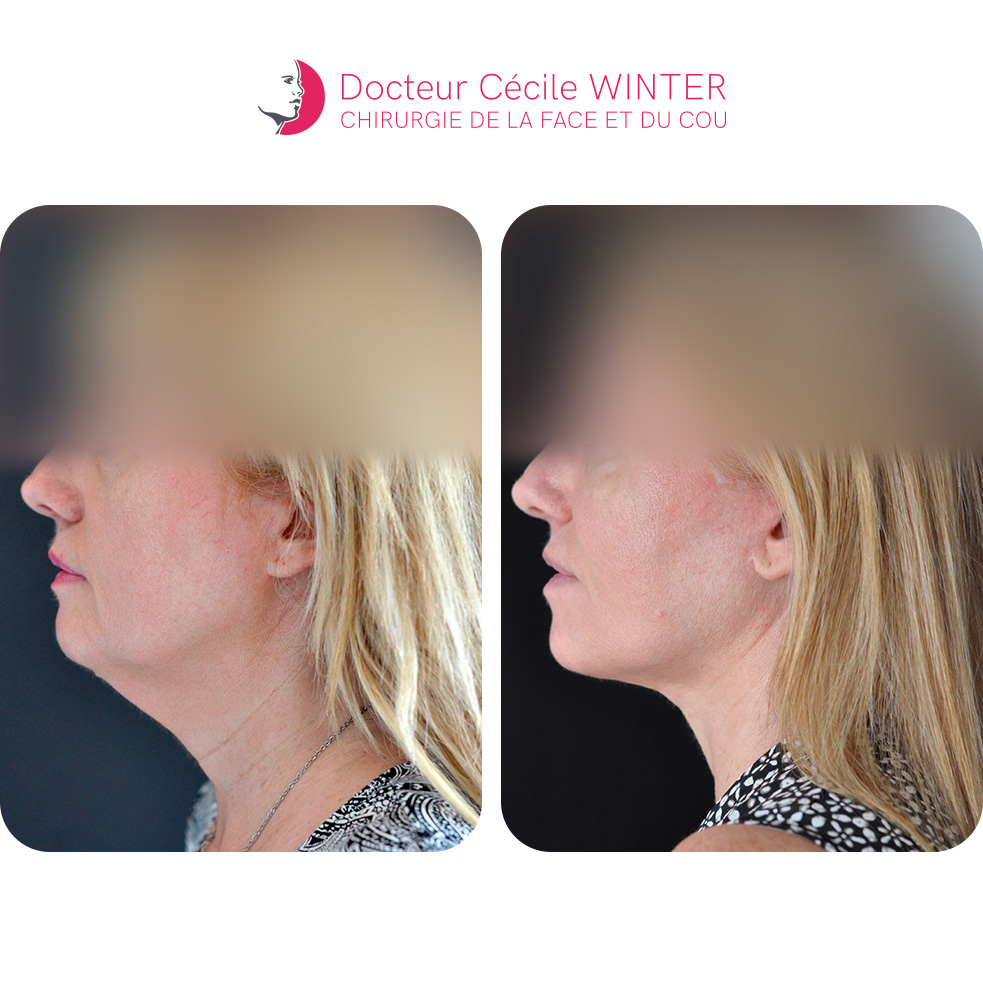
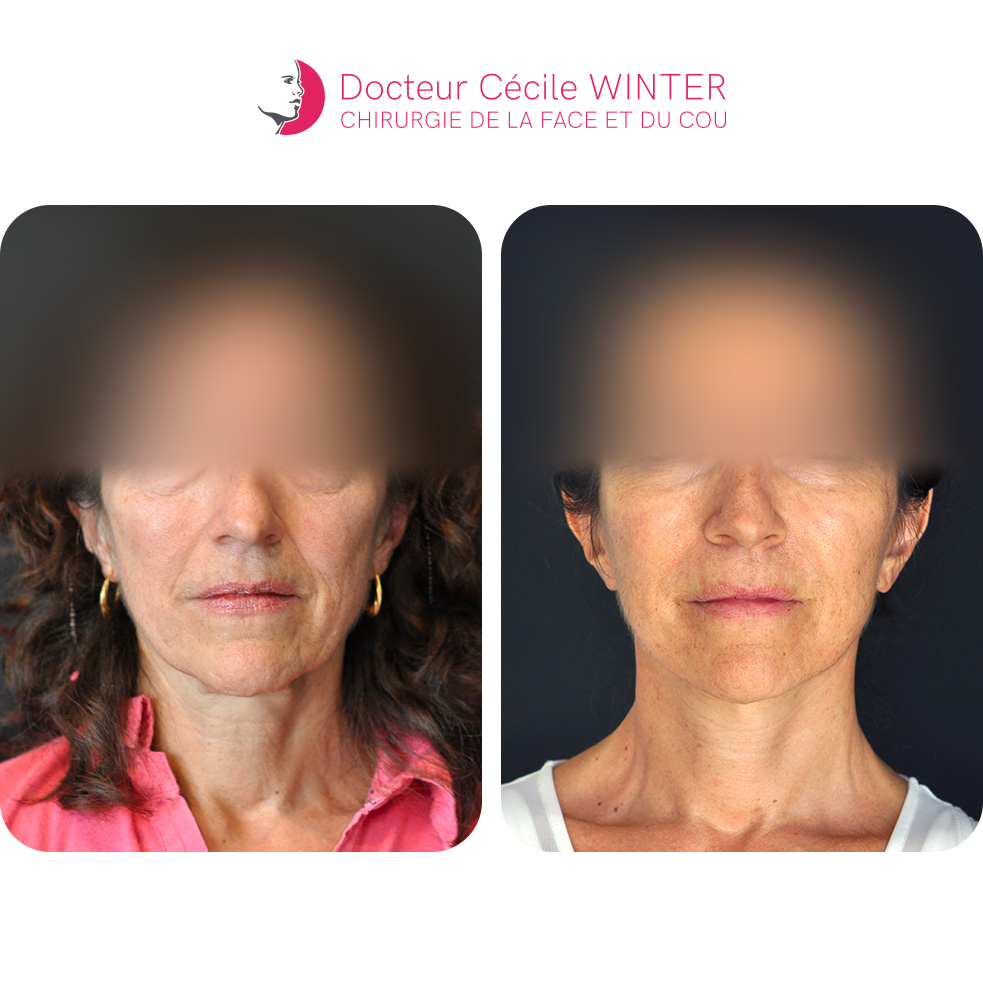
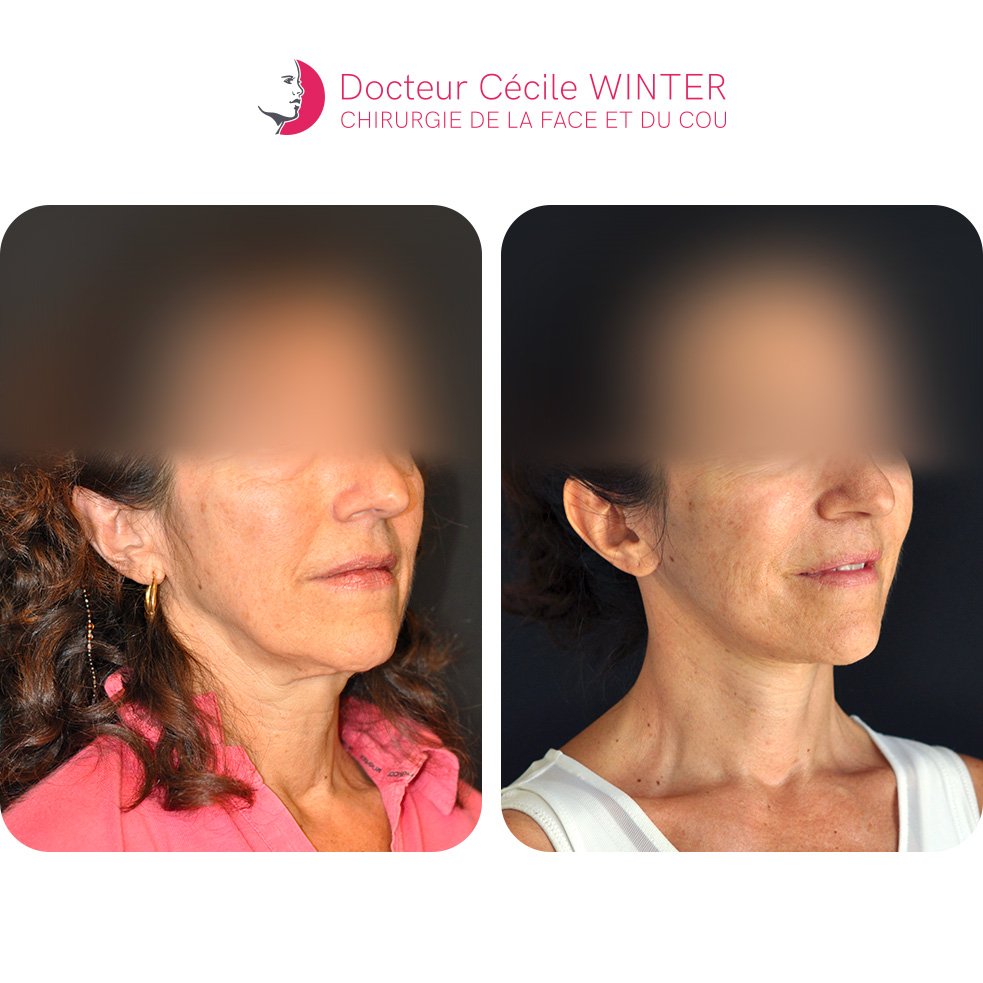
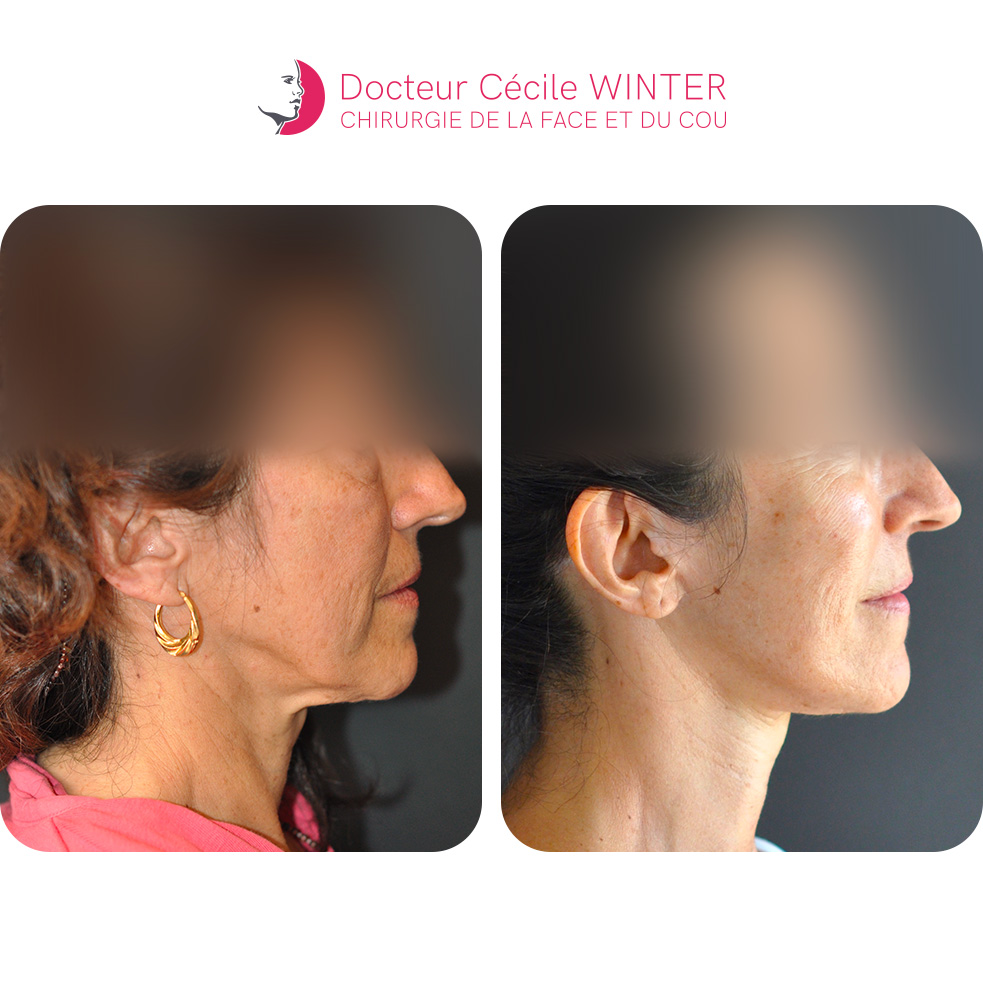
Conservative Anatomical Lift and Lower Blepharoplasty
Here we observe a patient experiencing visual fatigue and dryness due to a lack of tarsal support, leading to an orbital fat herniation. This fat loss is also visible in the nasolabial folds and marionette lines, with inadequate support of the lower lip. The oval and neck show sagging and shifting of tissues downward and forward, affecting the outer corners of the mouth and sides of the chin. This tired appearance can significantly impact self-esteem.
A conservative anatomical lift (Deep Plane Lift) and a scarless lower blepharoplasty were performed 6 years ago to address these issues. Annual maintenance with small injections has been carried out since.
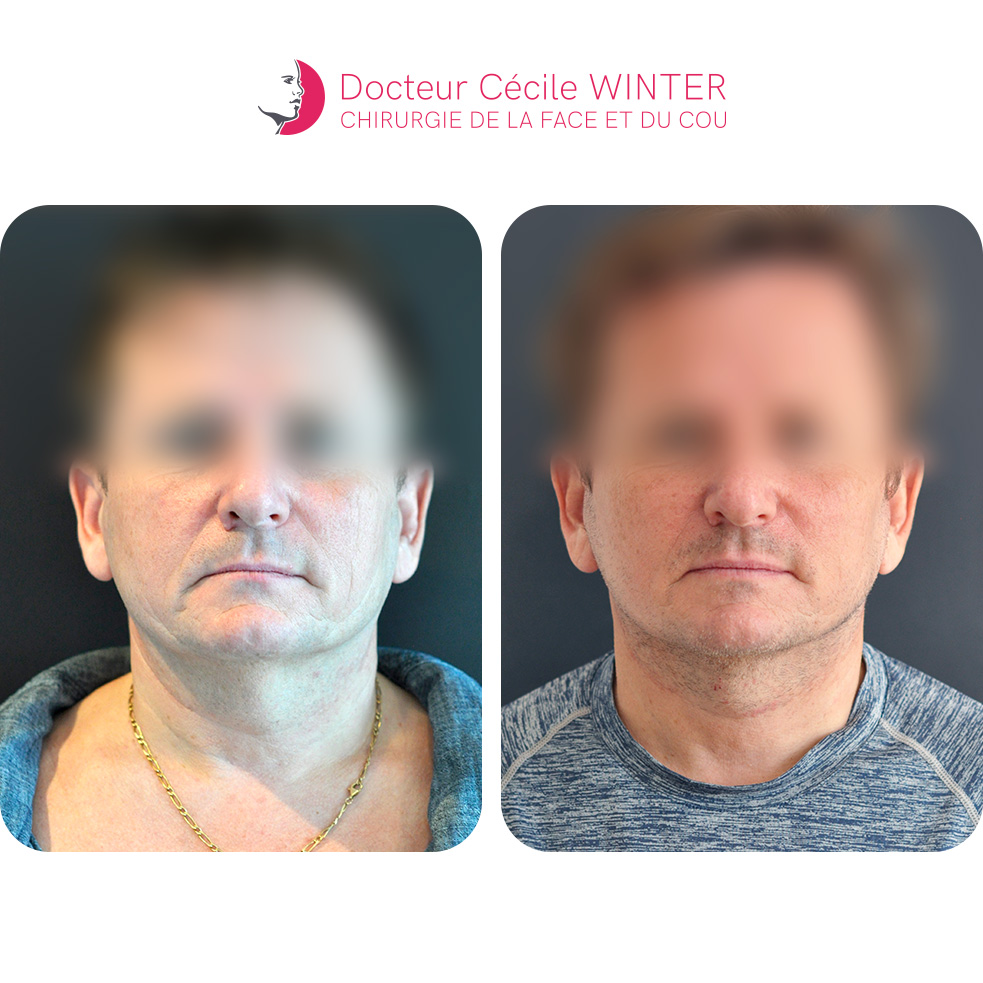
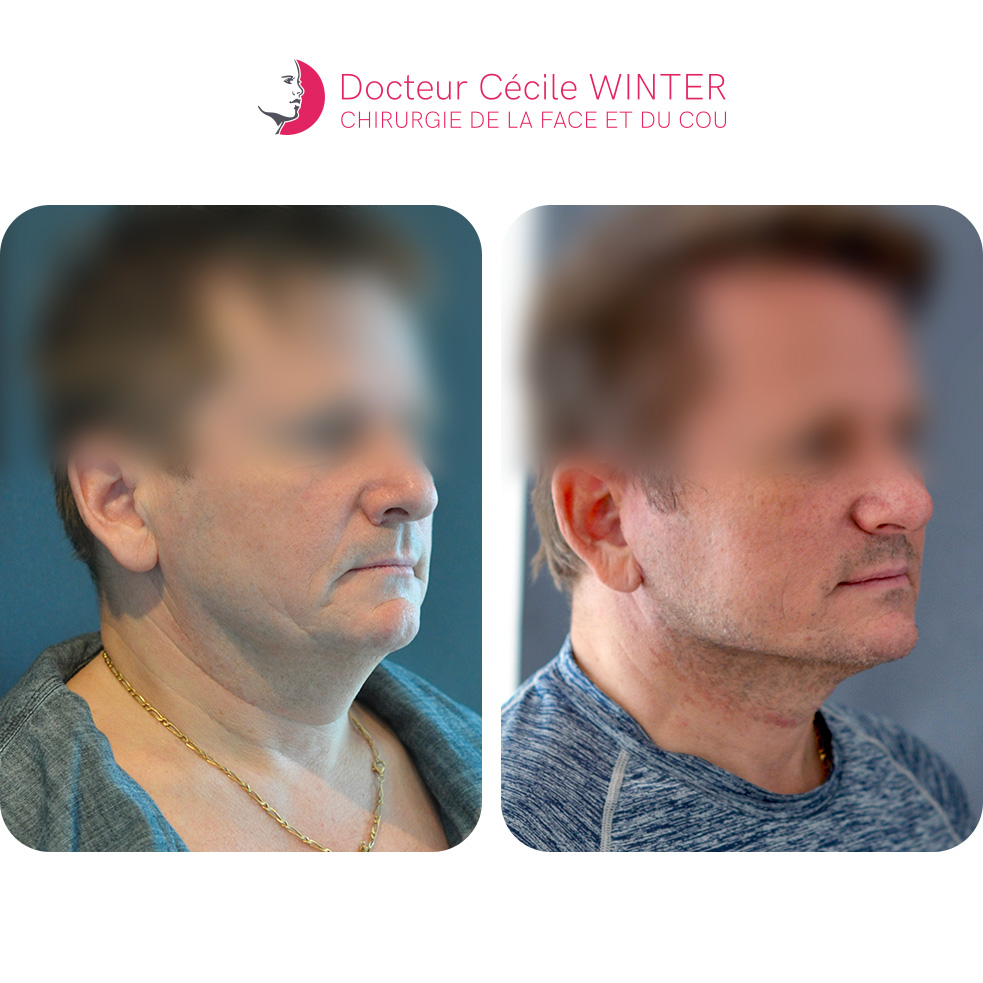
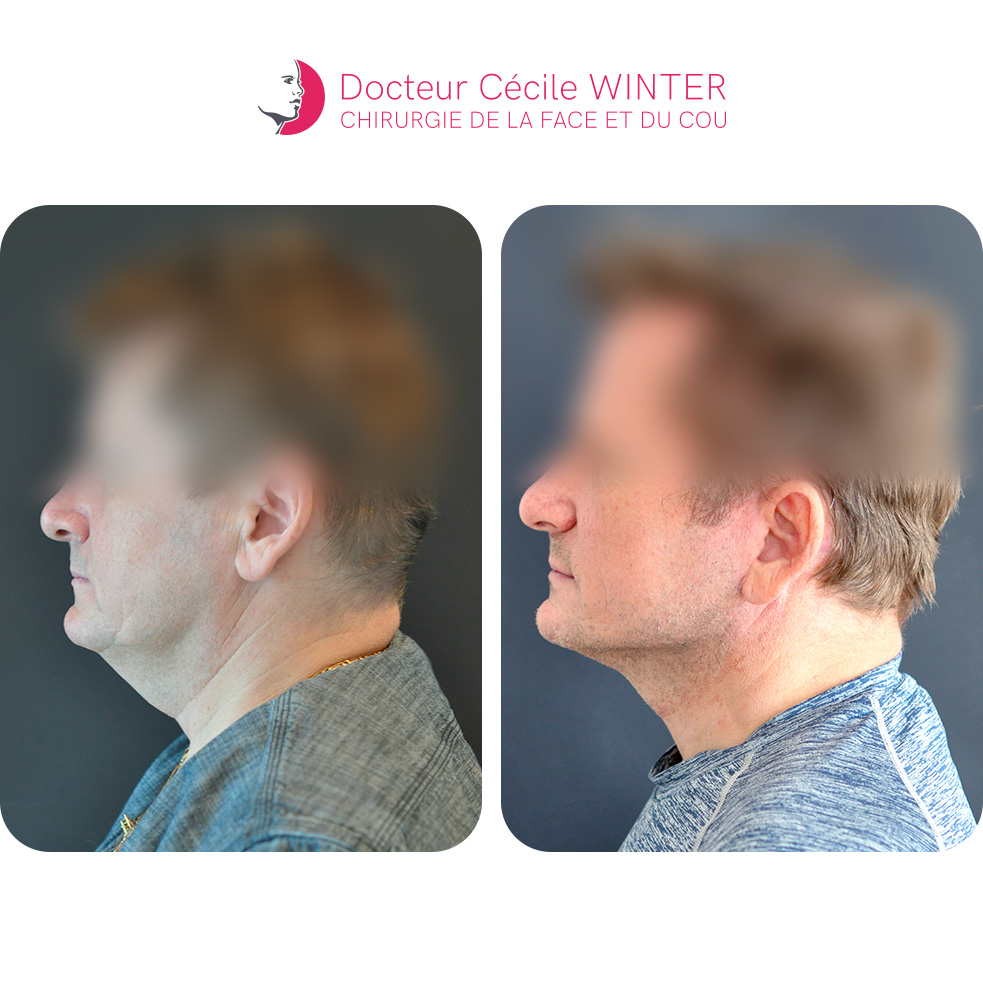
Male Cervico-Facial Facelift
The aging process also affects men's faces, leading to skin sagging and deep wrinkles. In men, age-related skin excess is generally more significant than in women. The facelift procedure involves removing this excess skin and tightening the superficial skin and muscles of the face.
Another specific aspect of male facelifts is hair management. I ensure that the skin tightening does not cause beard hair to grow in the ear area. The technique is specific to maintain natural hair growth areas and ensure a natural result.
Look closely at these images! You can see the striking difference that a male cervico-facial facelift can make. The signs of aging and skin sagging are erased, revealing a rejuvenated, toned, and dynamic appearance.
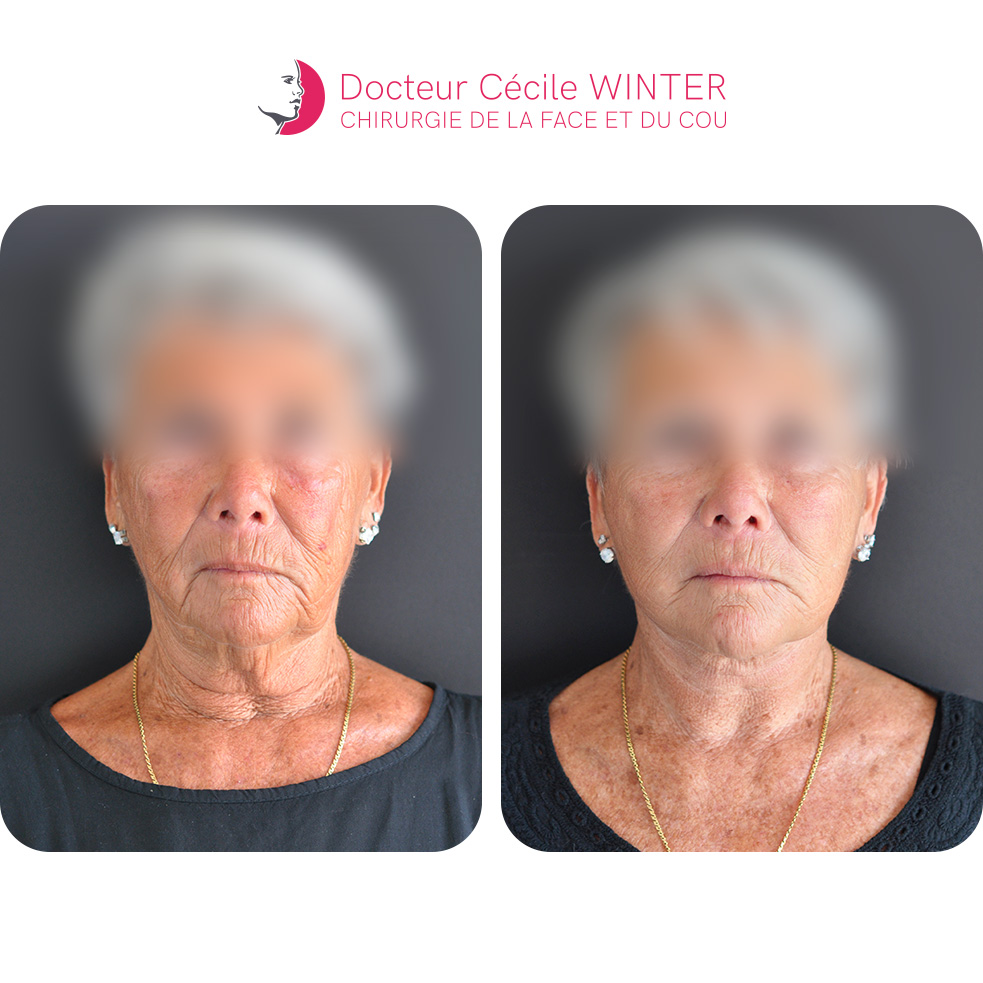
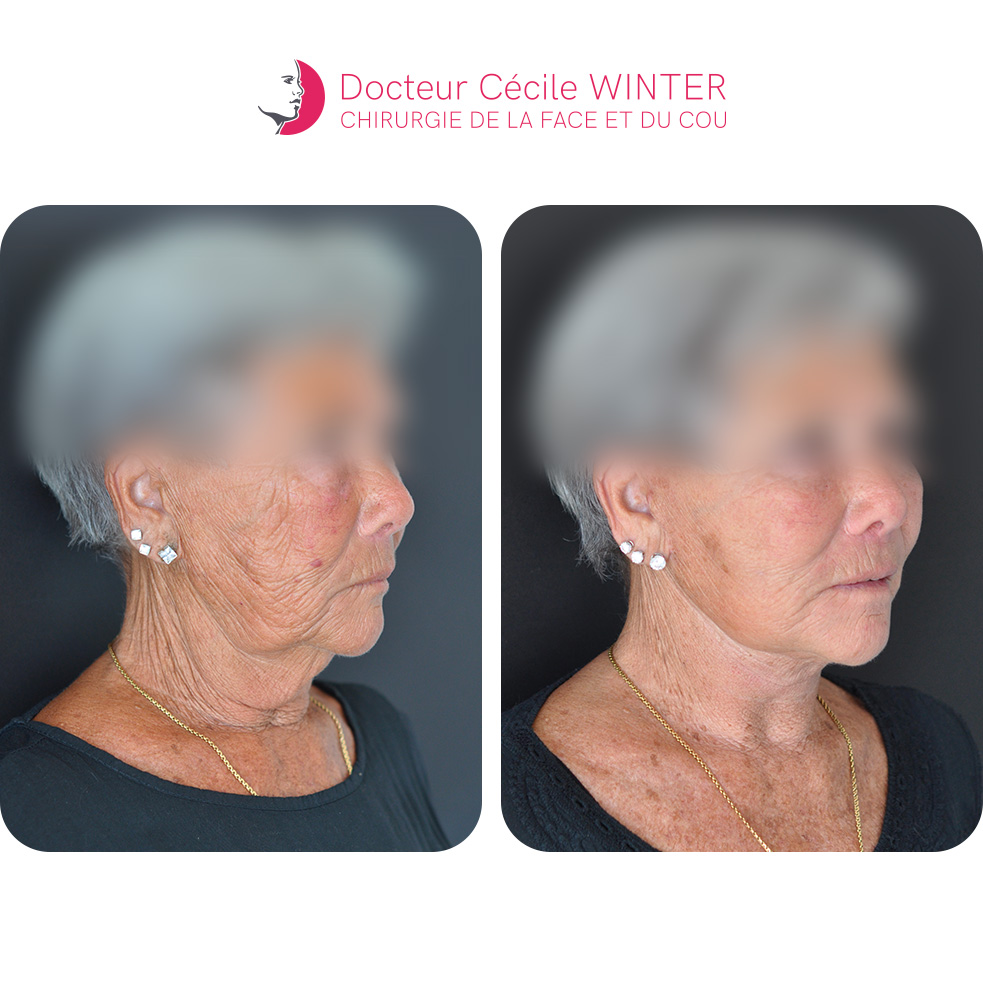
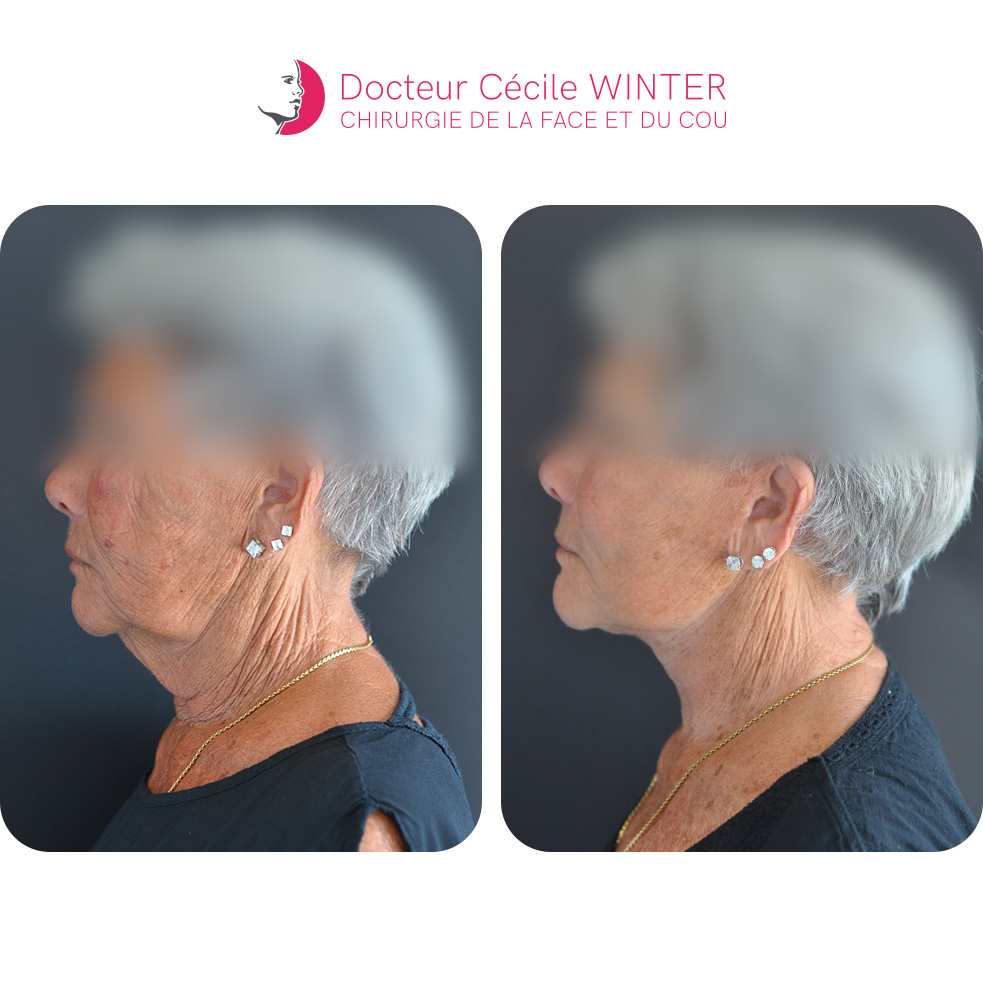


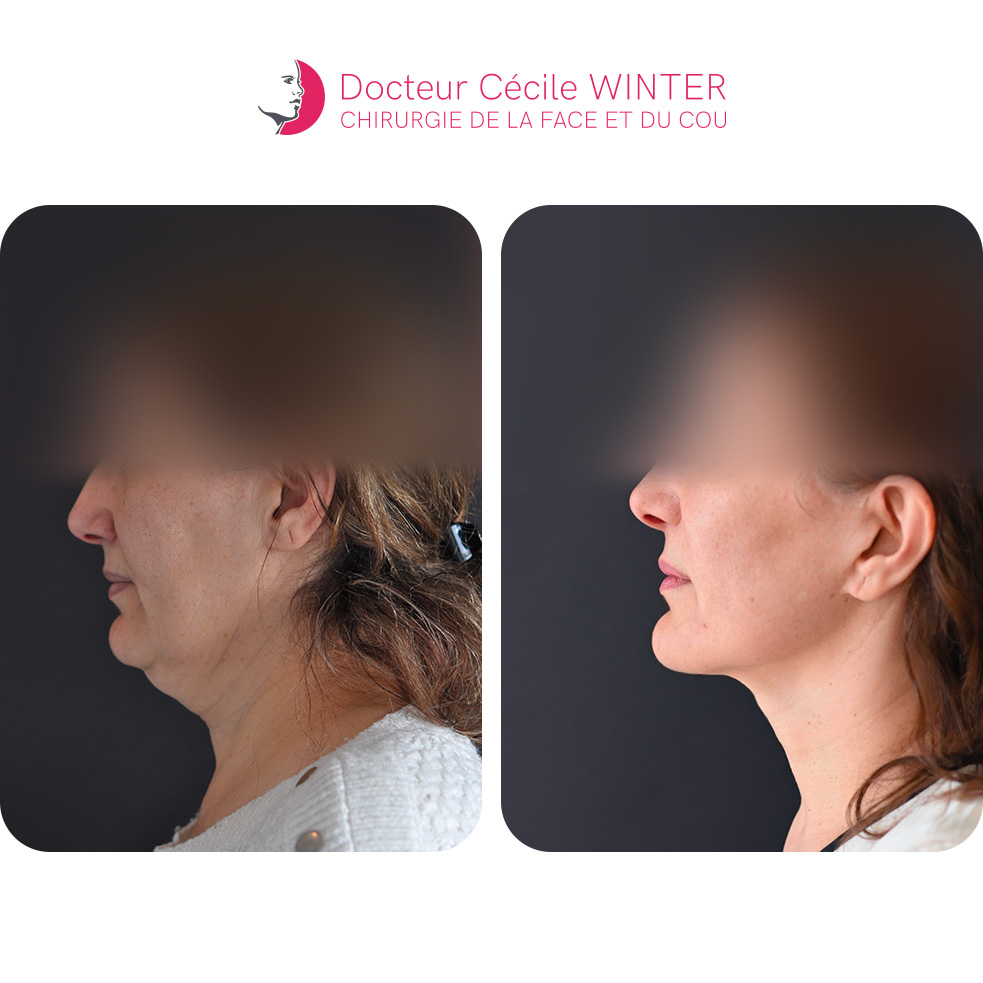
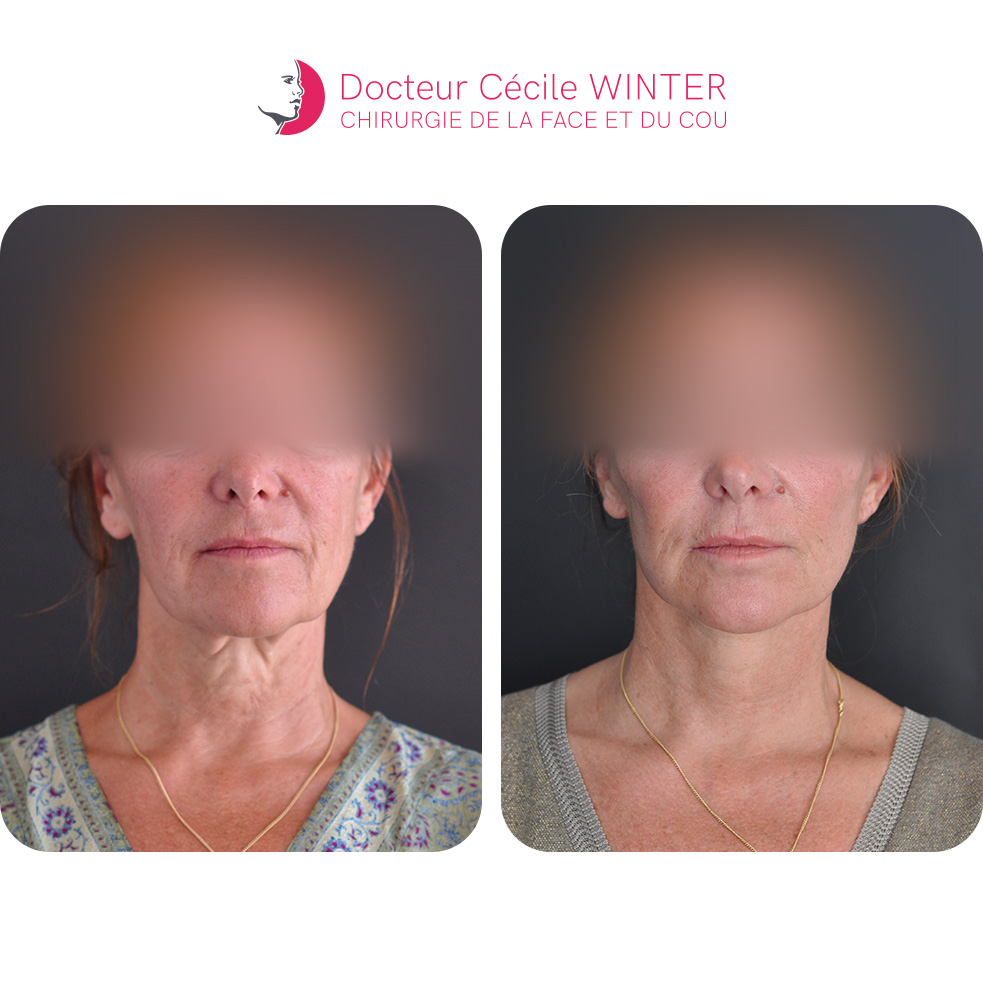
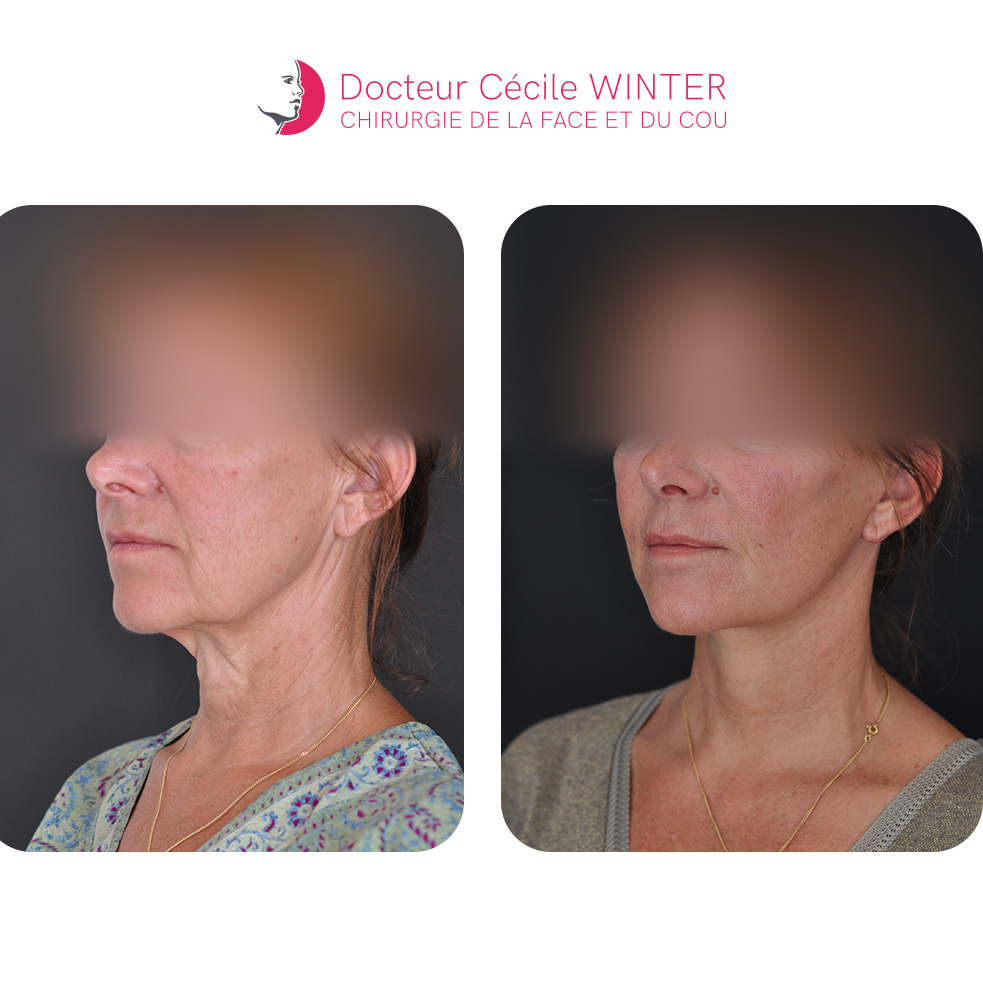

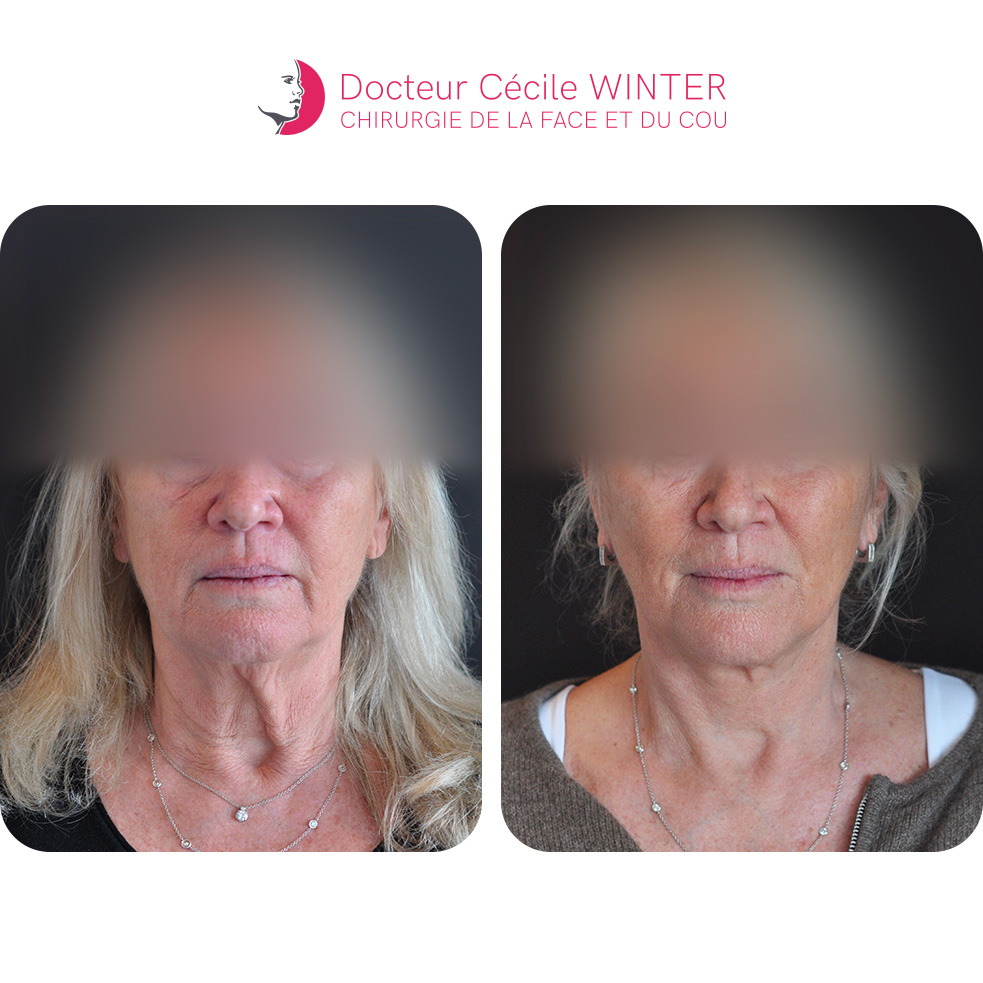
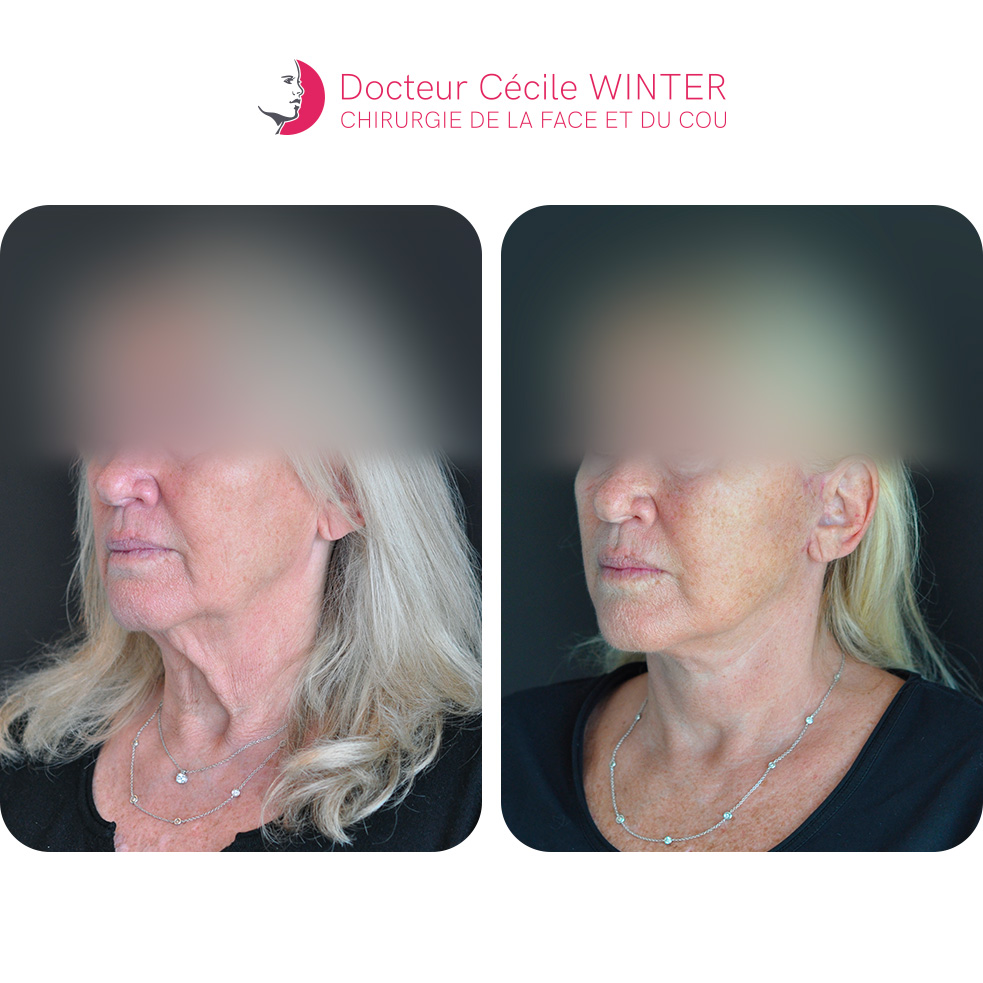

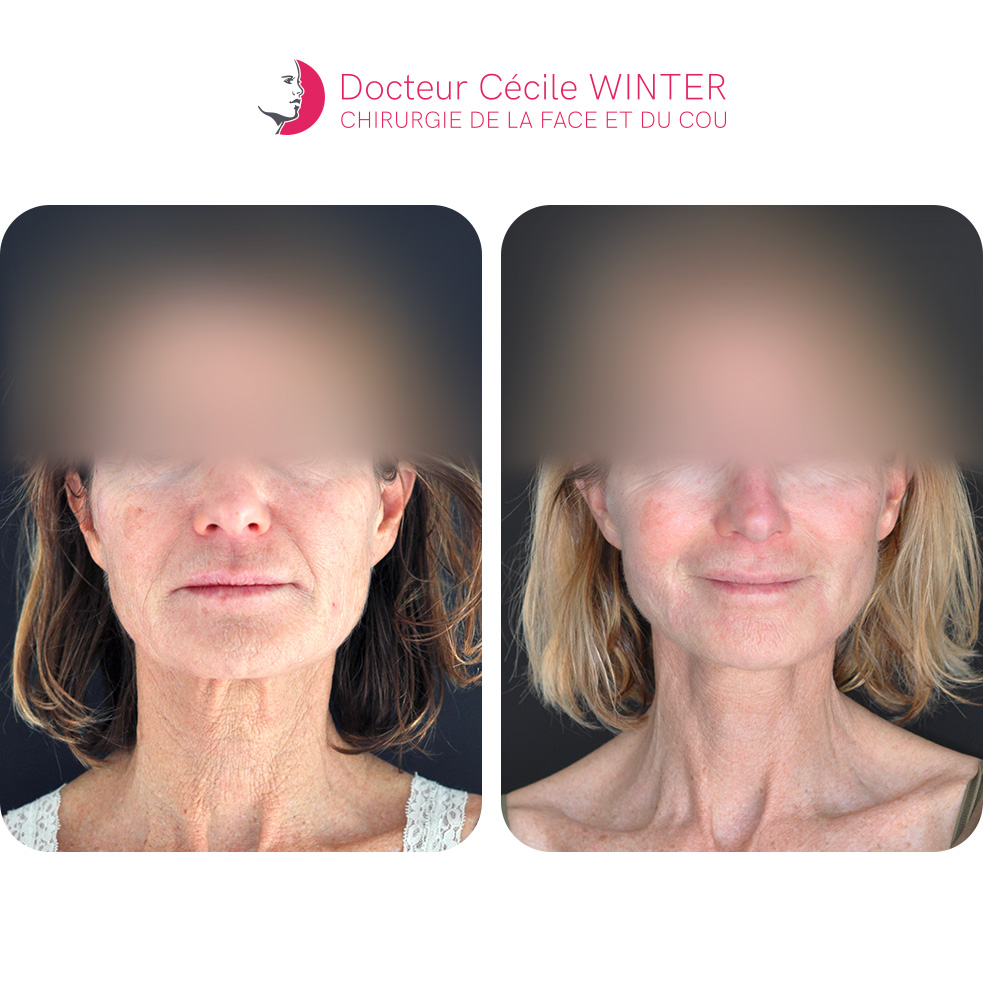
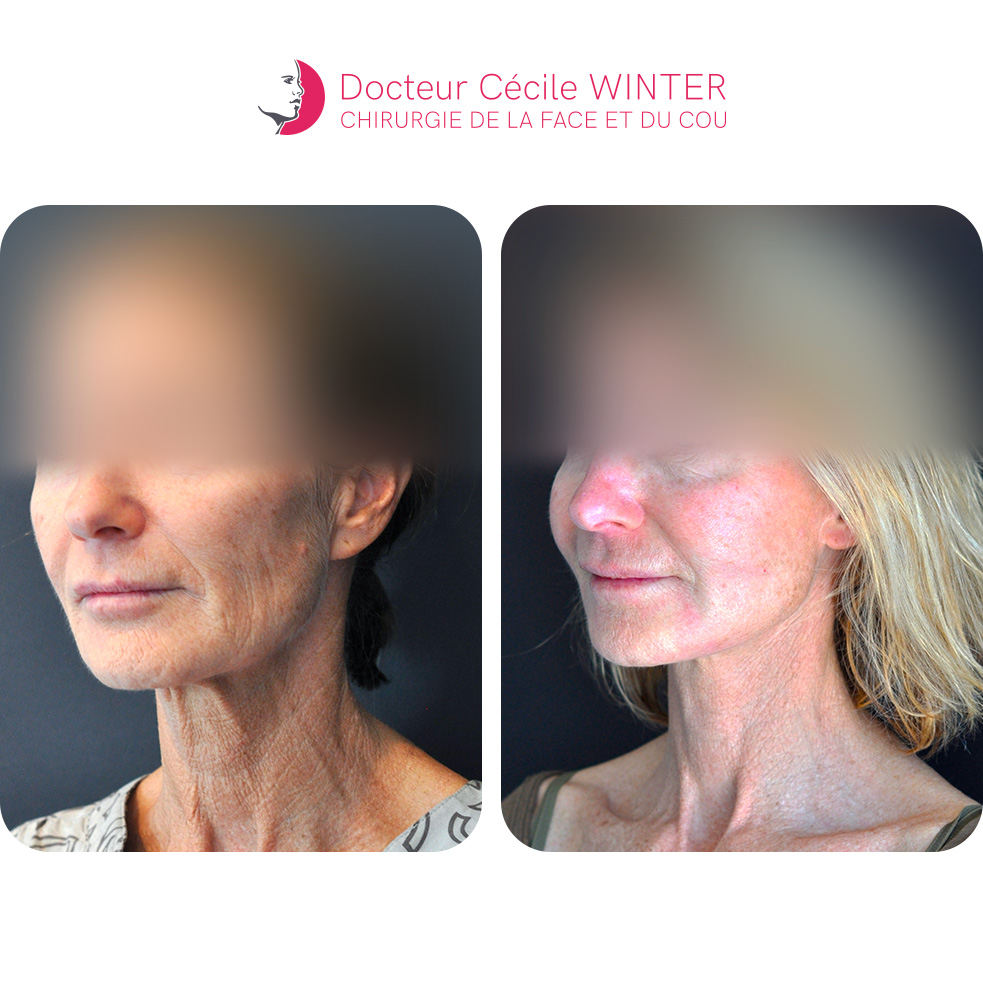
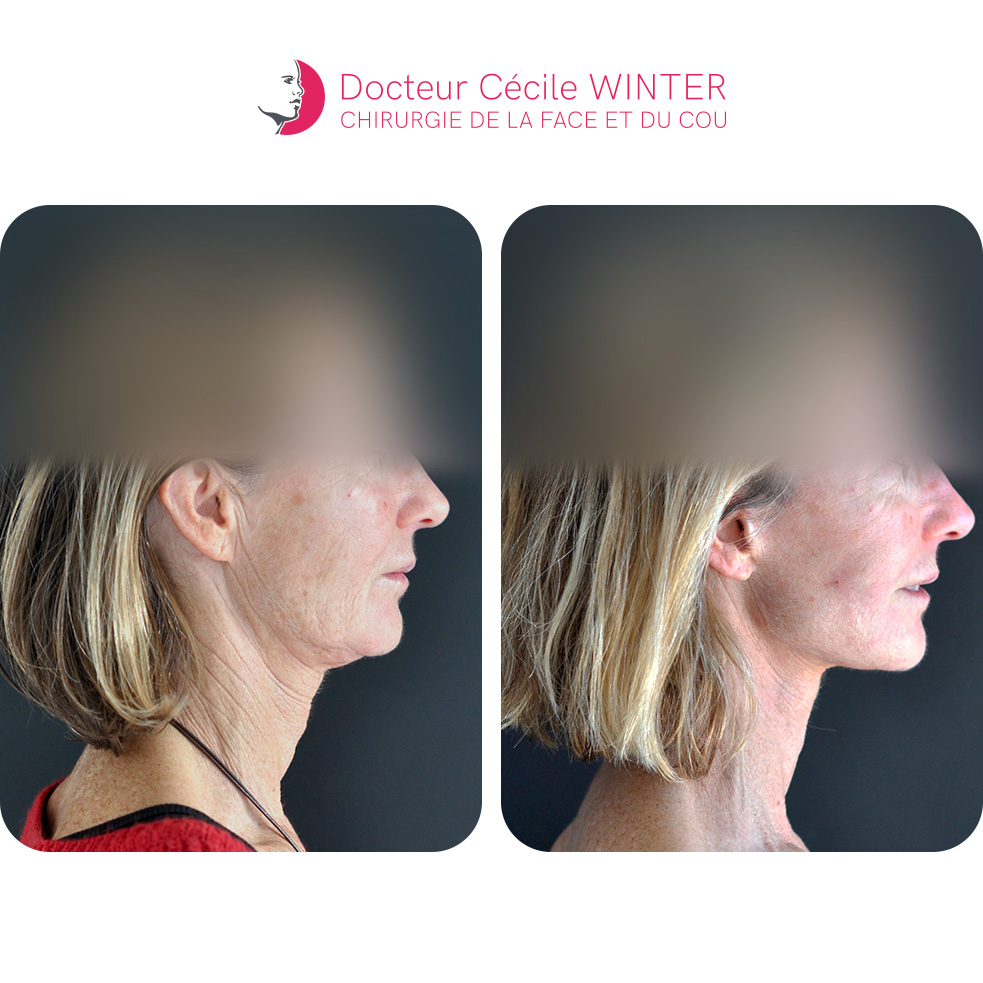
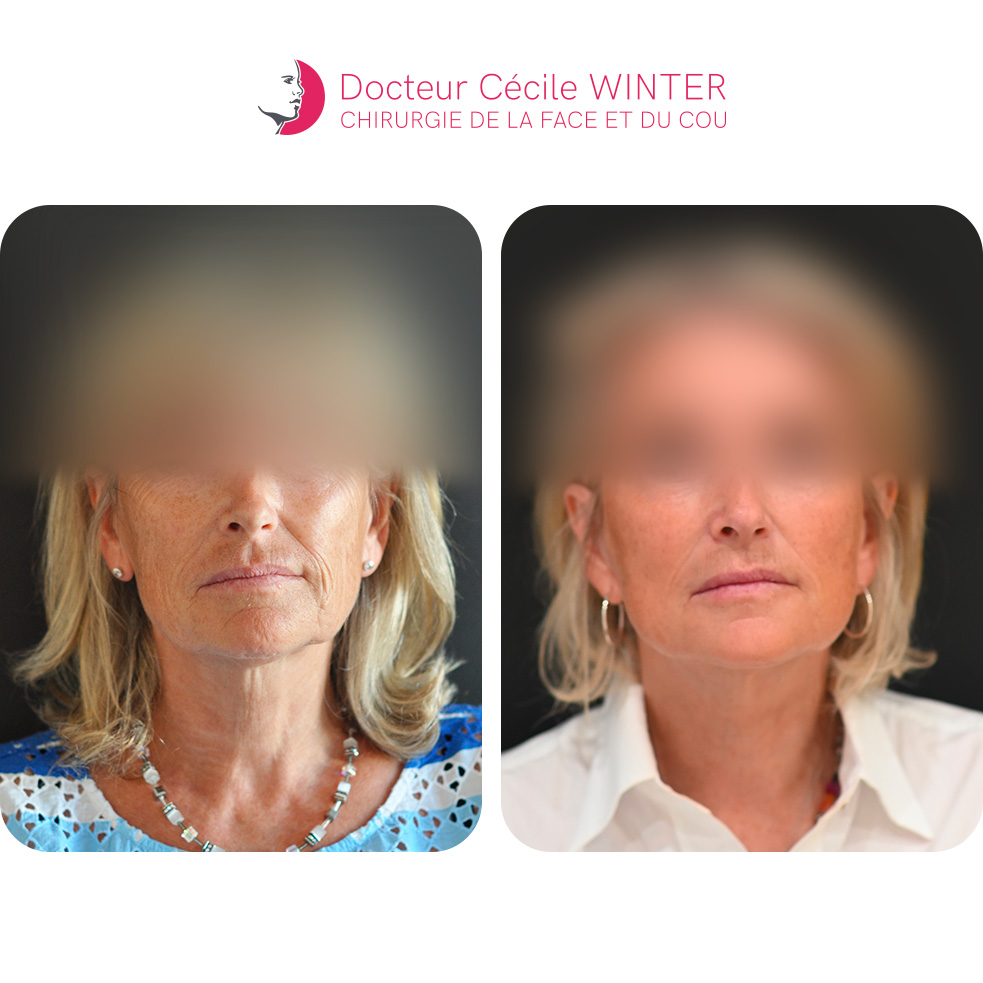
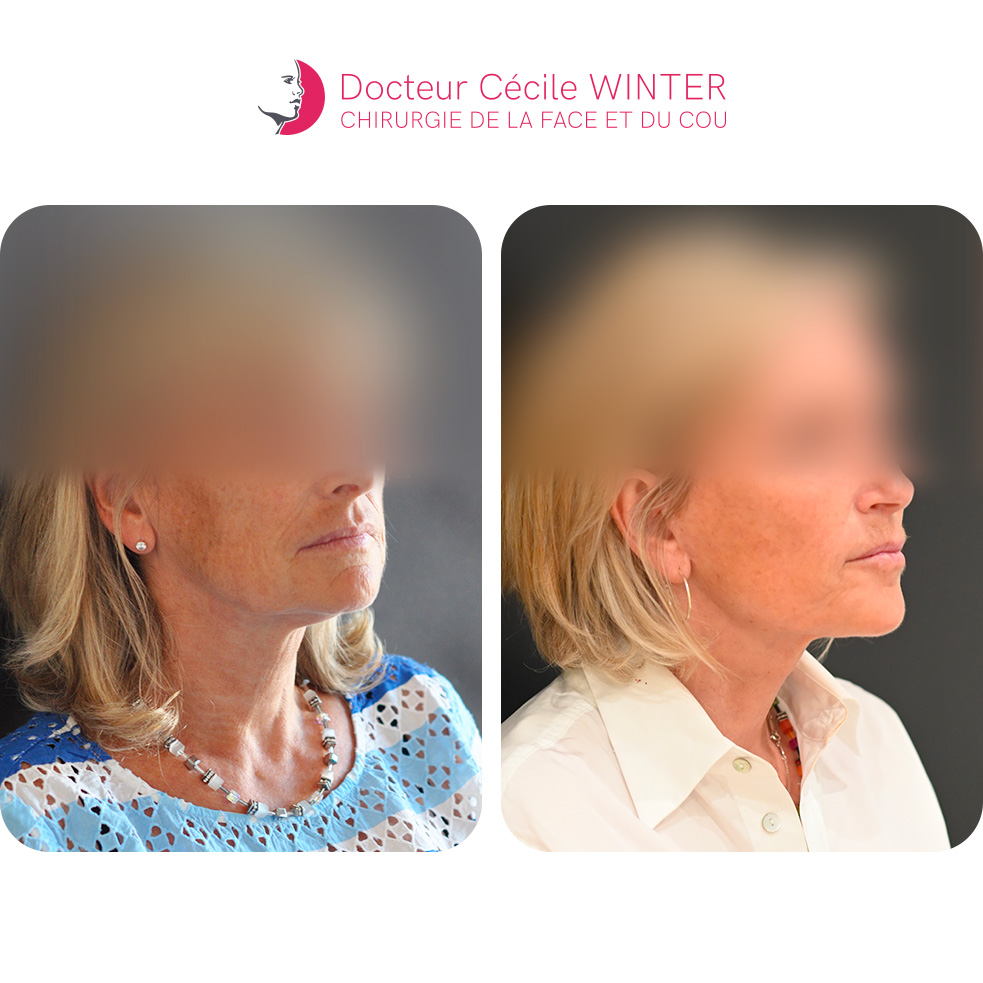

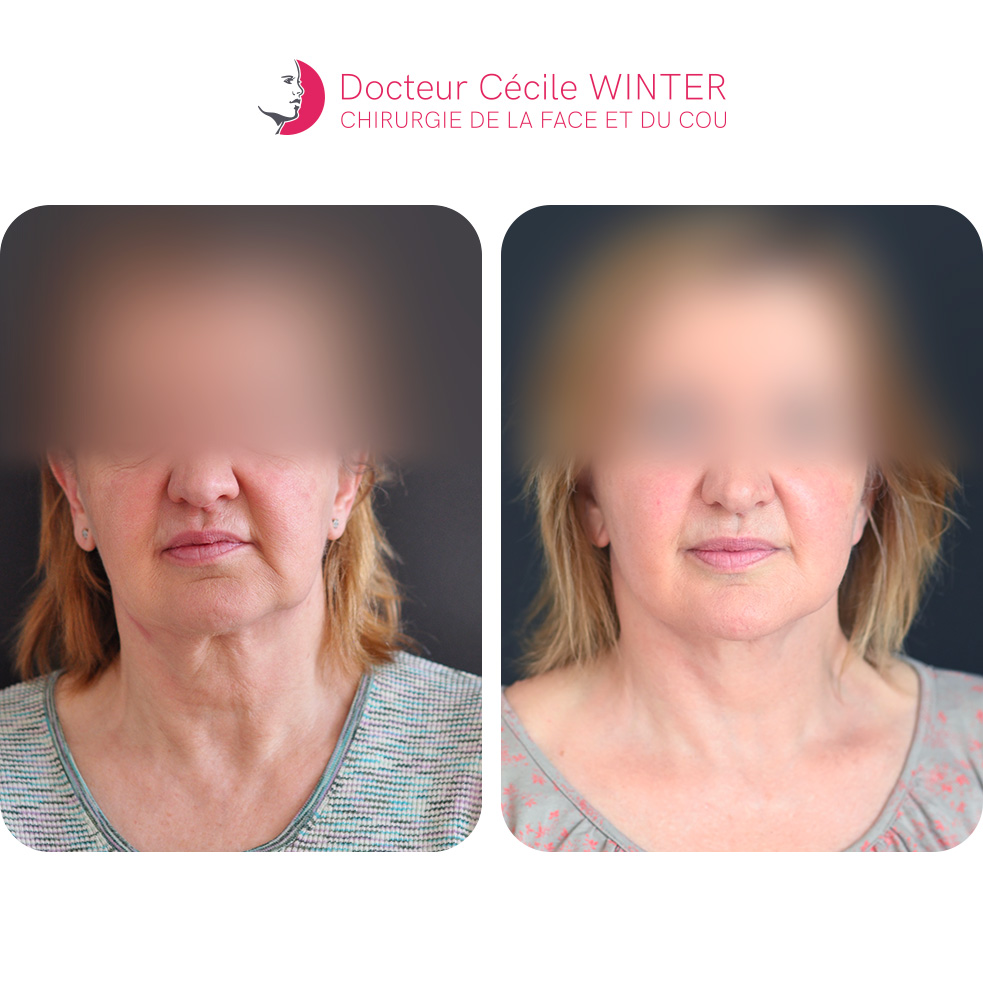
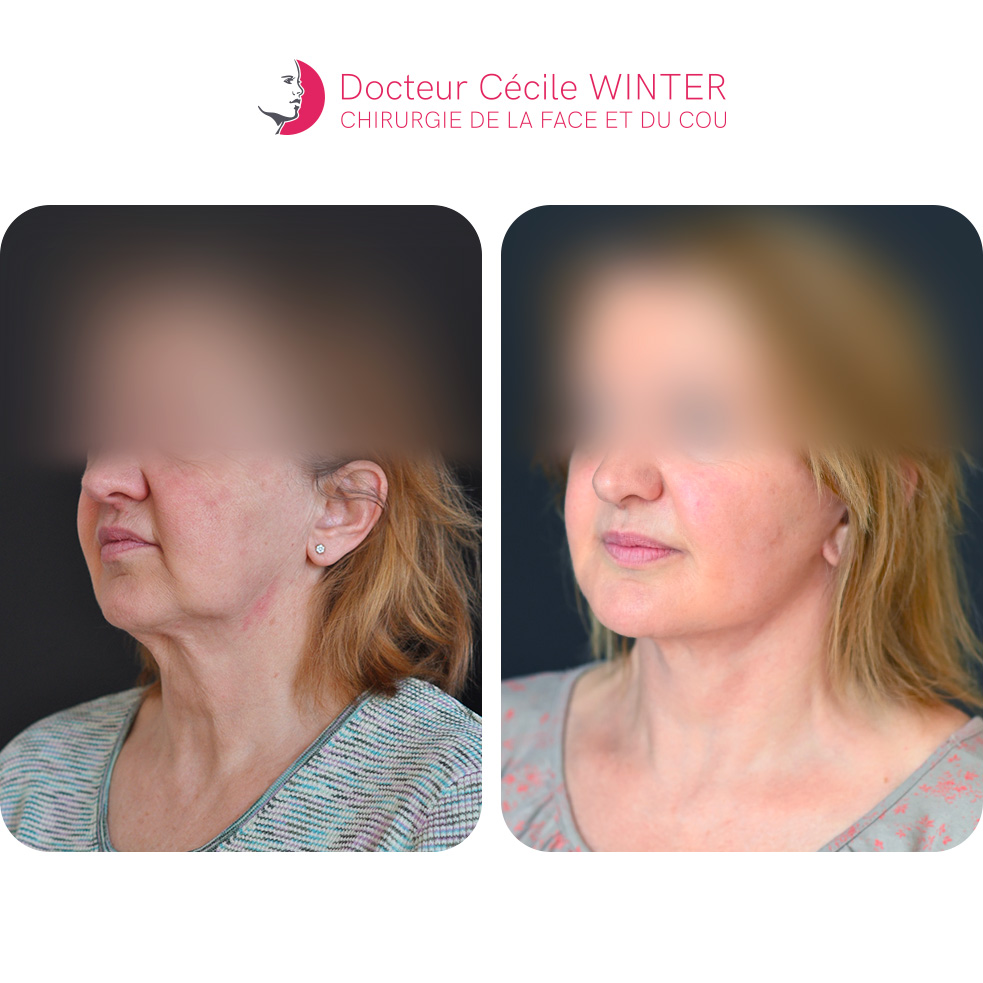
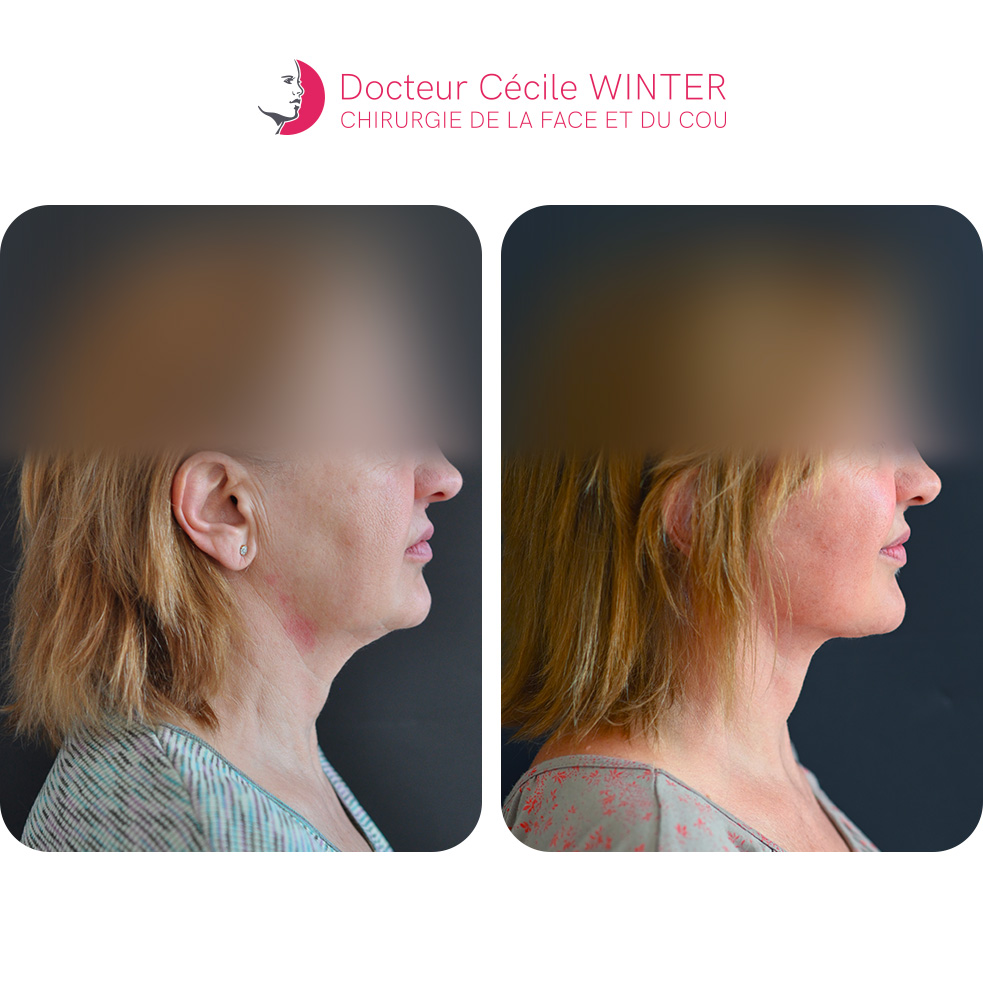
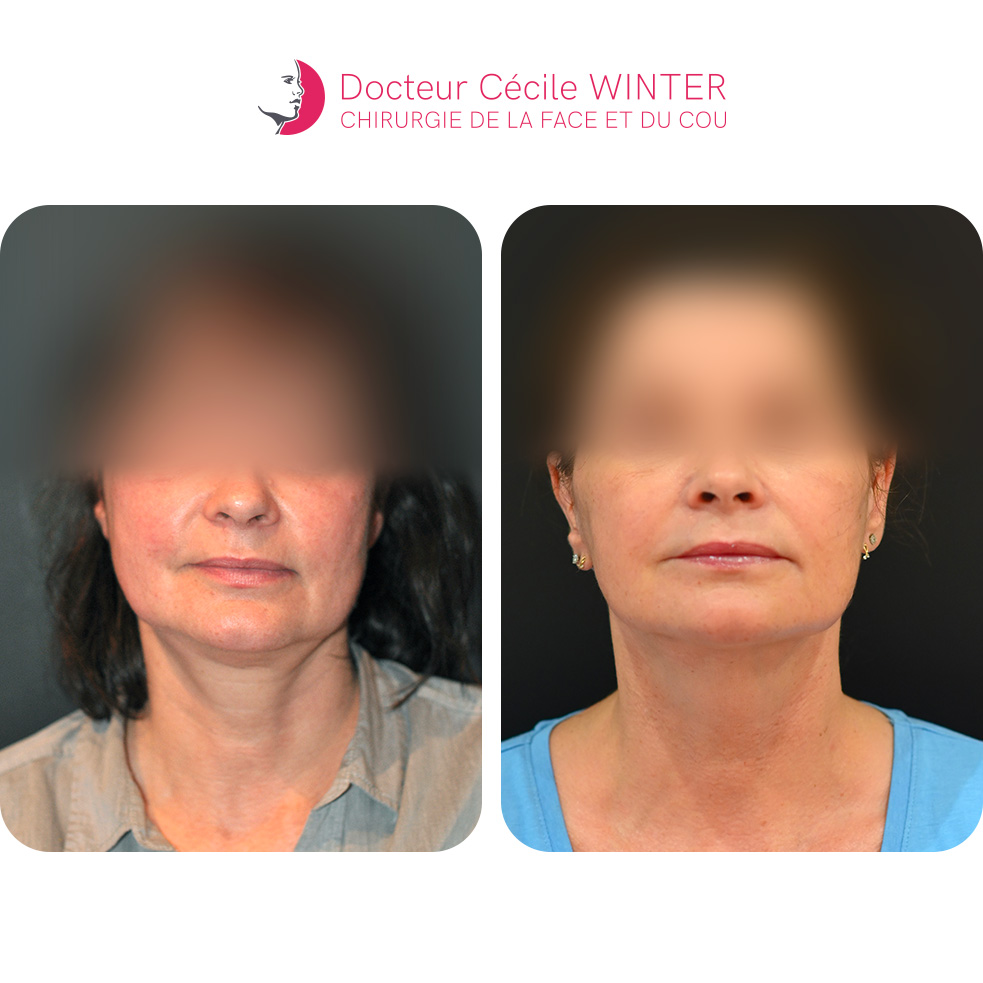
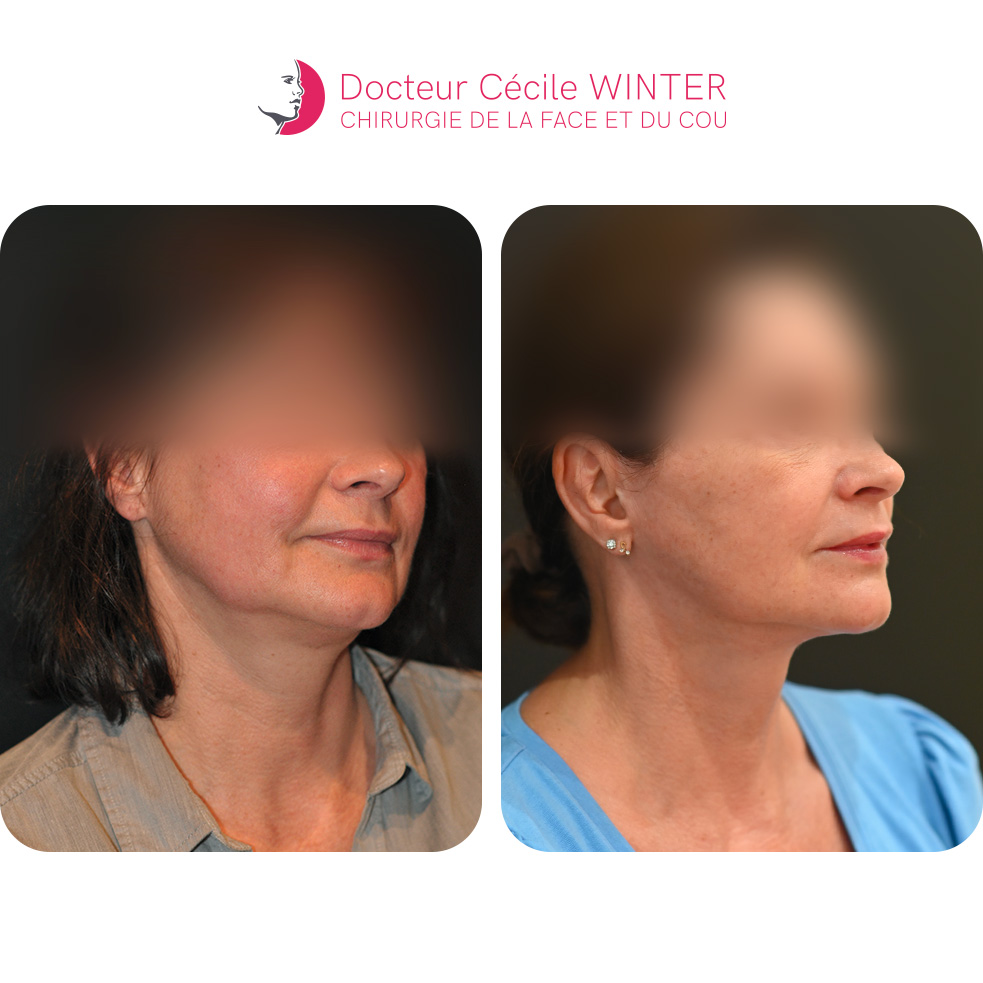
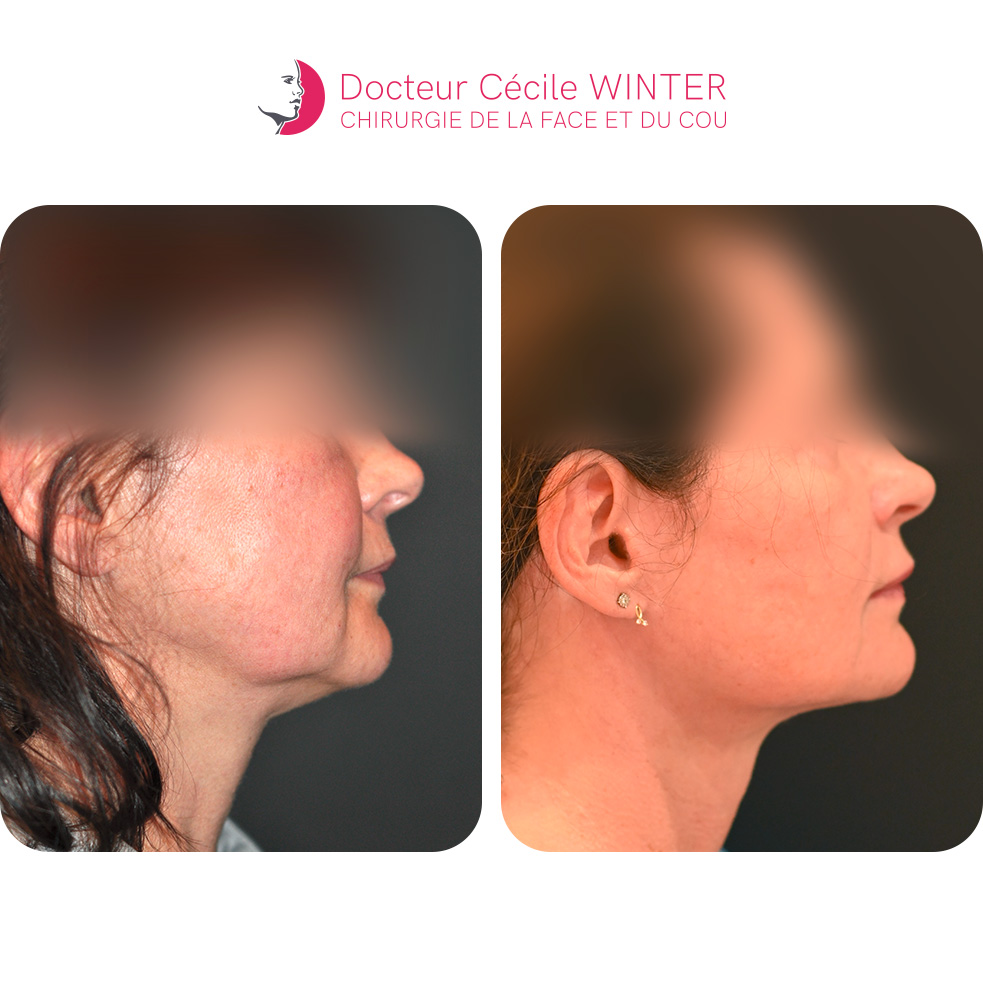
Deep Facelift and Eyelid Surgery
This radiant 56-year-old patient benefited from a deep facelift with lipostructure a few years ago, followed by upper eyelid surgery, and continues to take care of her face.
Over time, the face is subjected to a negative vector due to gravity and repeated muscle contractions of the muscles that pull the face and neck downwards. Initially, this can cause negative emotions to appear on the face. In the long term, this can lead to ocular suffering due to insufficient coverage of the lower eyelid, which is pulled downwards.
During a deep facelift, we simply reposition the muscles and fat compartments that have shifted downwards. Thus, there is virtually no subcutaneous detachment. This allows the muscle-fat-skin unit to remain intact, preserving fine expressions and facial movements. The detachment is located under the muscle. After being deeply released, it is reattached deeply in a youthful position.
Excess skin will be removed without tension. The scars are hidden around and inside the ear. In the front, they respect all the hair and hide in the hairline, around and inside the ear. In the back, the scar is hidden in the hair. No scars on the neck or under the chin were necessary.
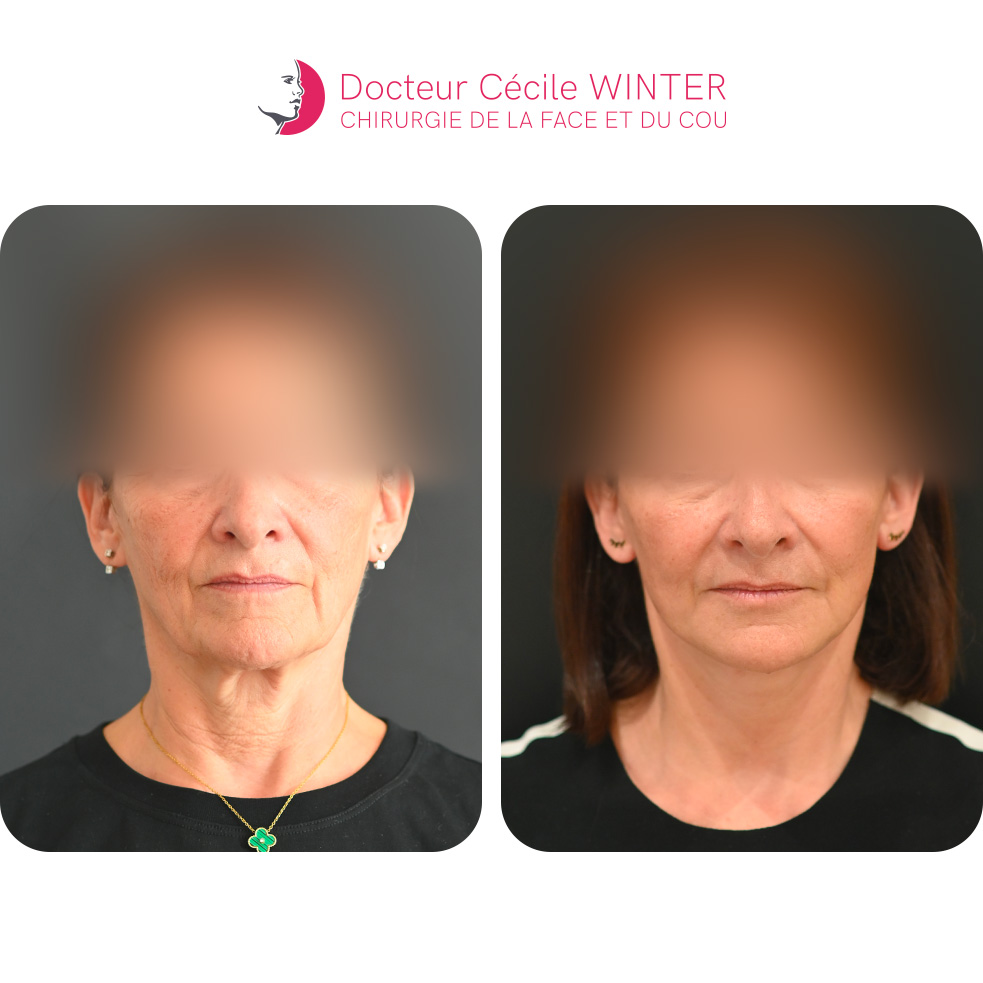
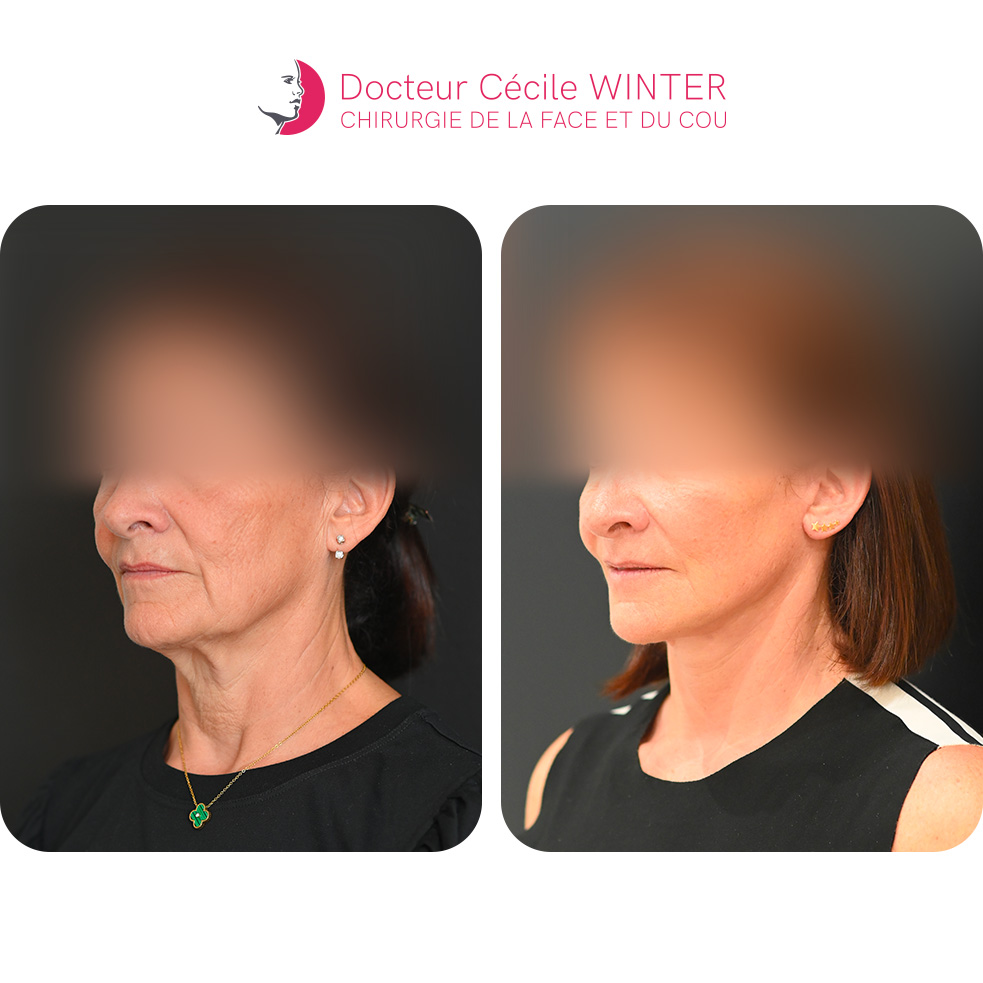
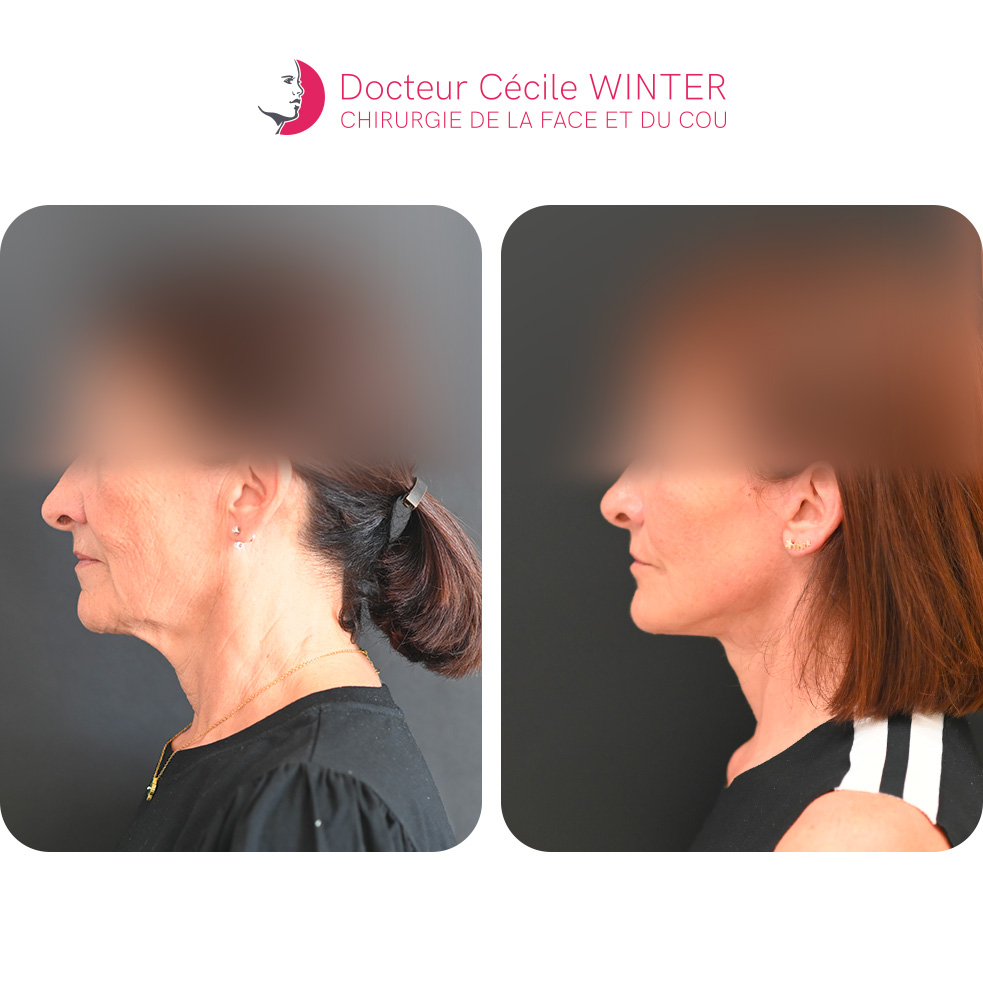
Before/After Cervico-Facial Facelift
Here is the before/after of this beautiful patient, whose goal was to restore the firmness of the tissues in her face and neck. The photos are six months apart.
The cervico-facial lift is sought by patients generally aged between 40 and 80, whose face and neck areas have started to sag. While age is a factor, it is primarily the bony anatomy of the cervico-facial region and the quality of the skin that will determine whether a lift is indicated or not.
The cervico-facial lift procedure is performed under general anesthesia and lasts between two and three hours, depending on the complexity of the procedure. The operation involves discreet incisions, usually located around the ear and scalp, allowing access to the platysma muscles to reposition them and thus tighten the tissues.
